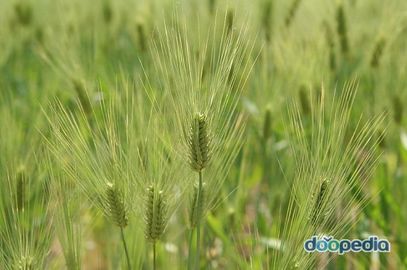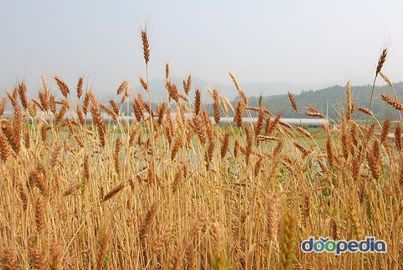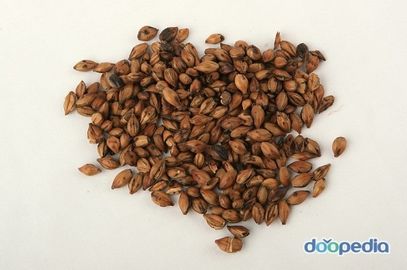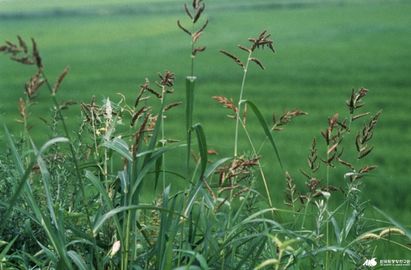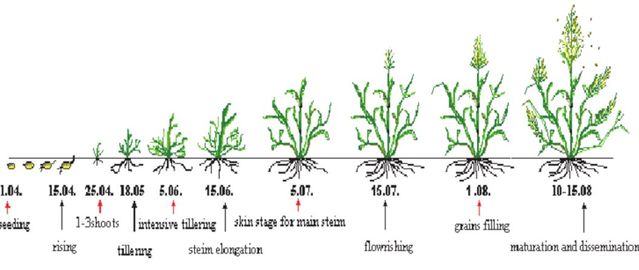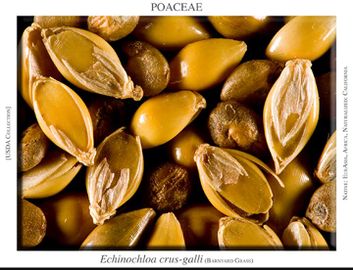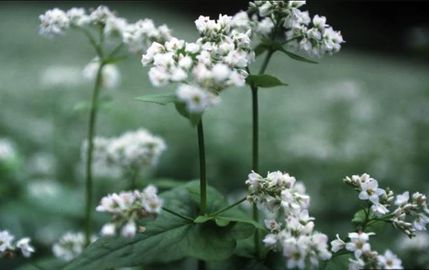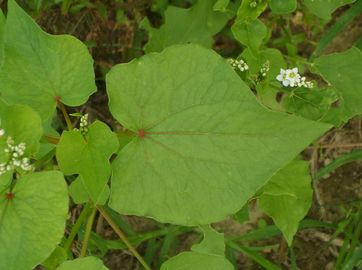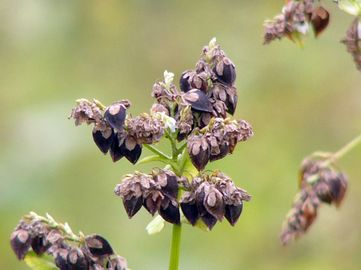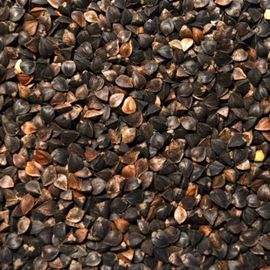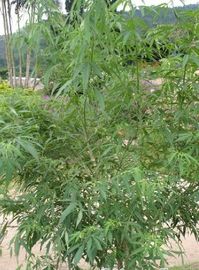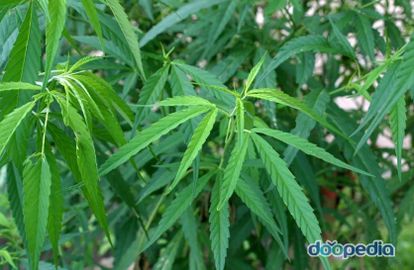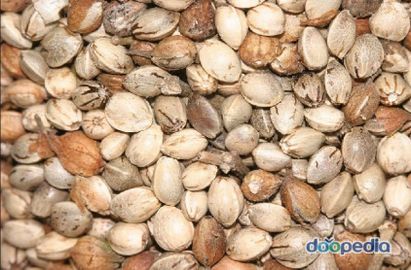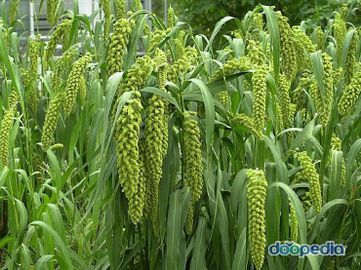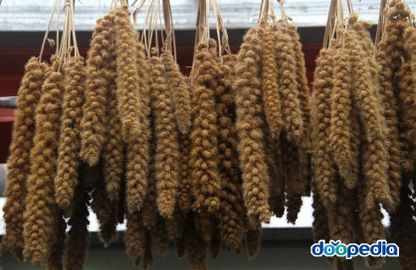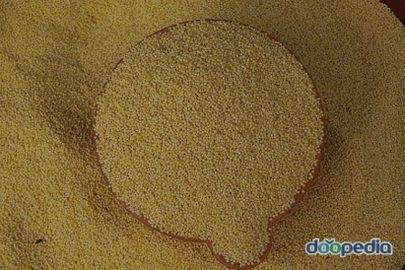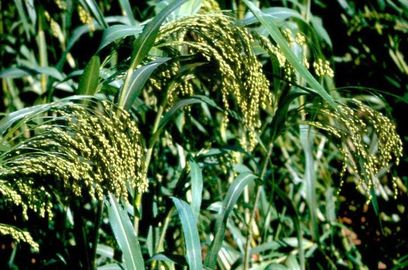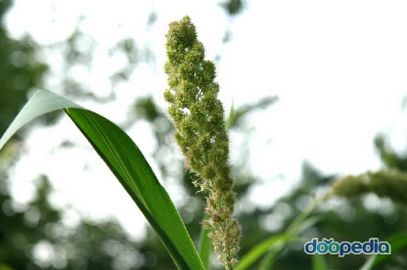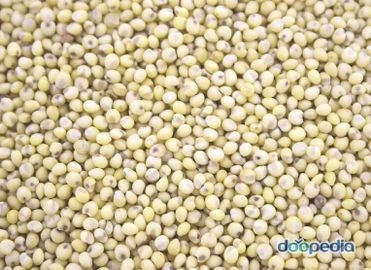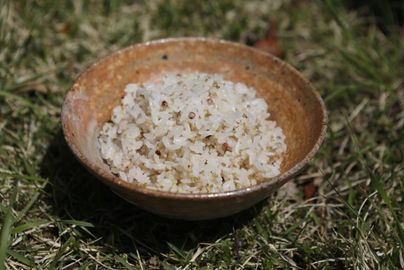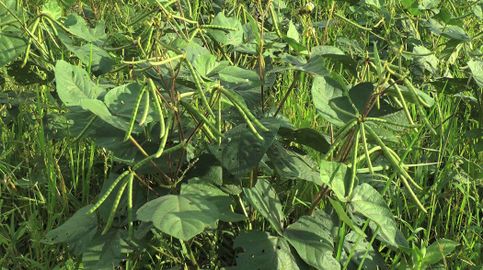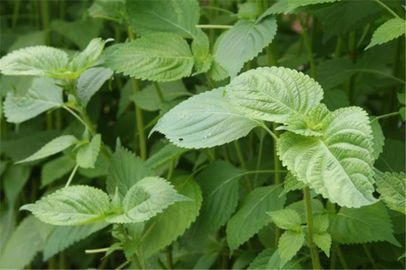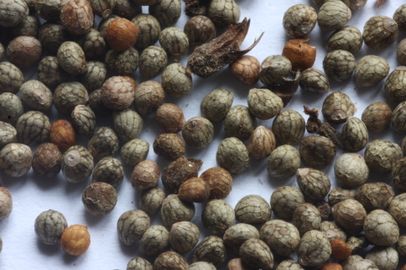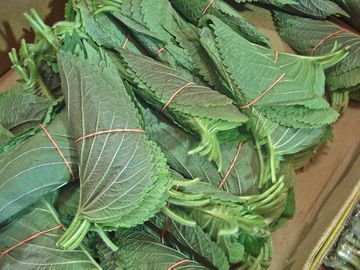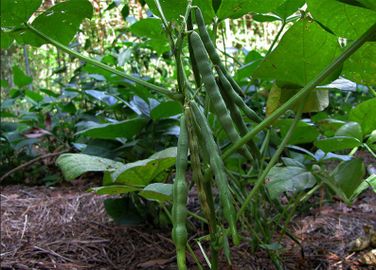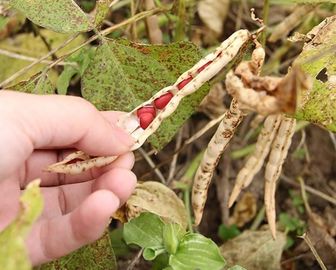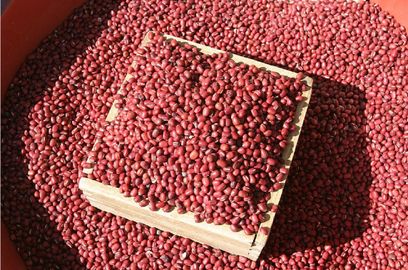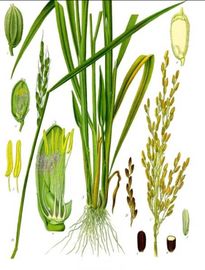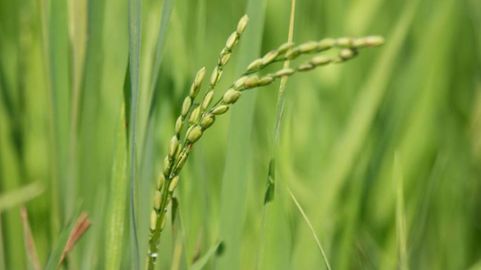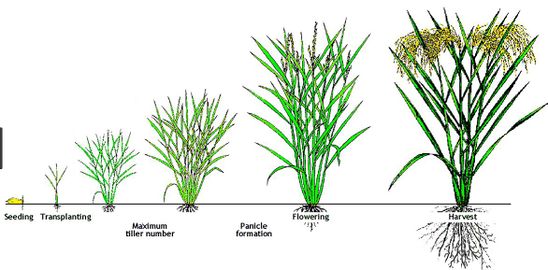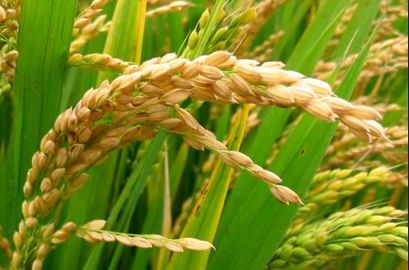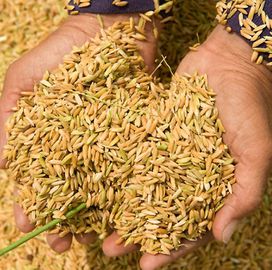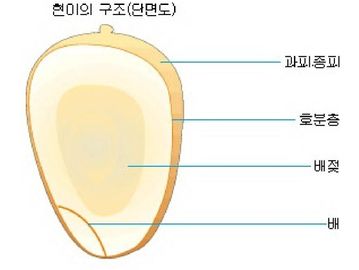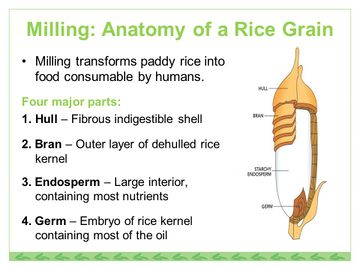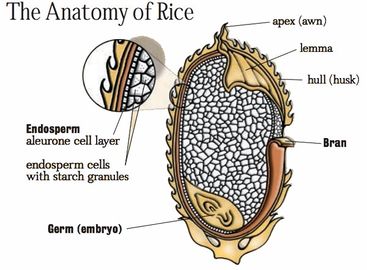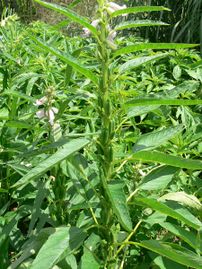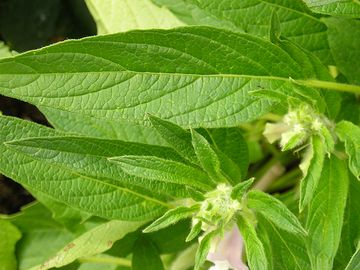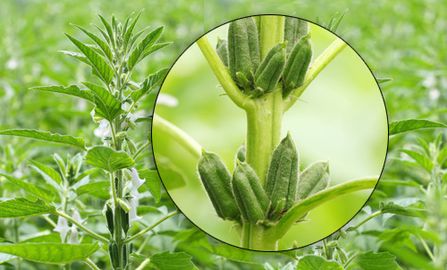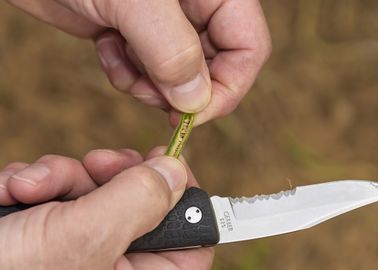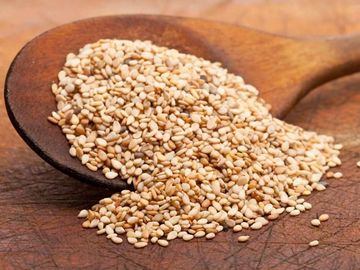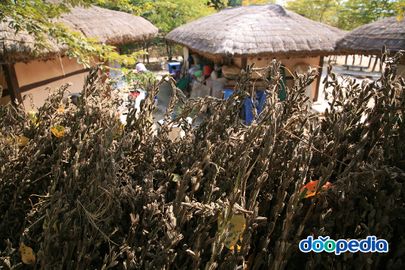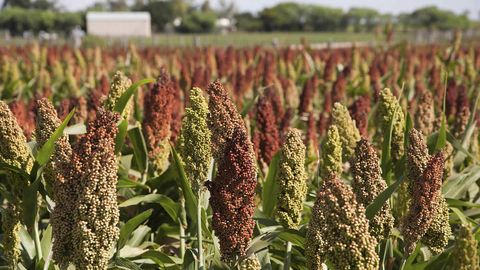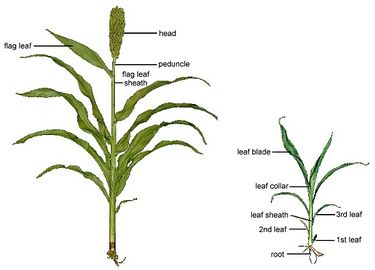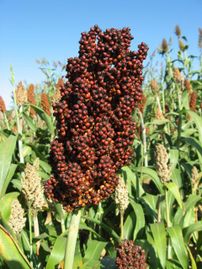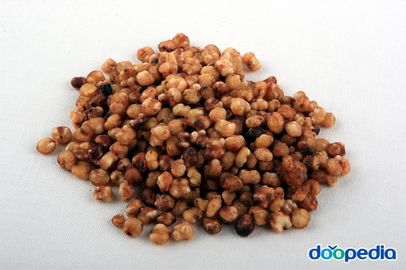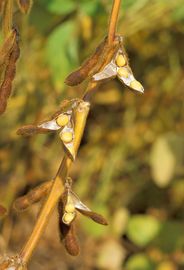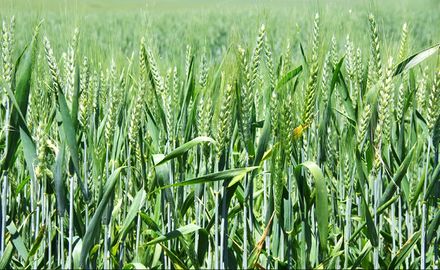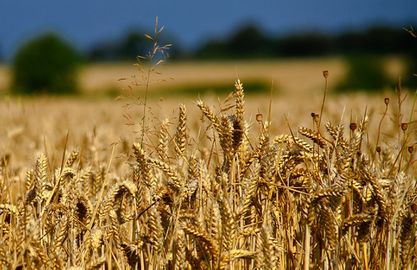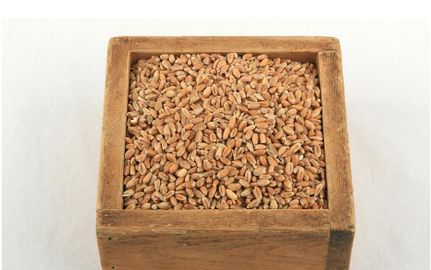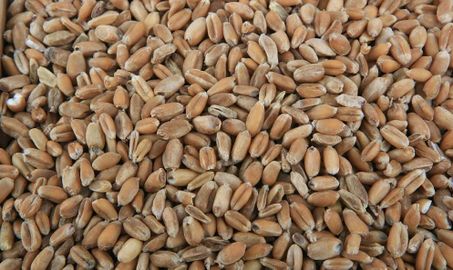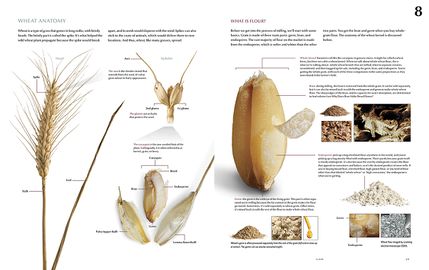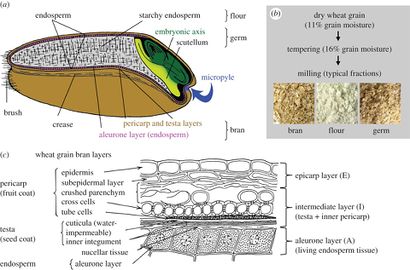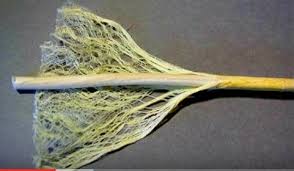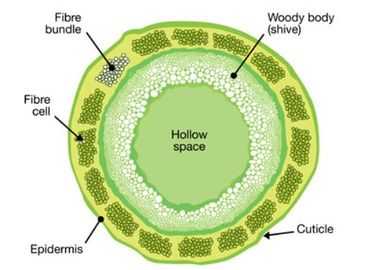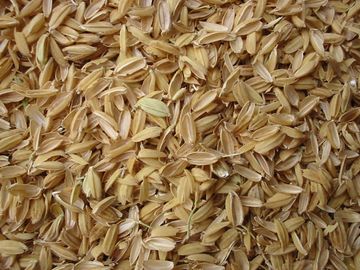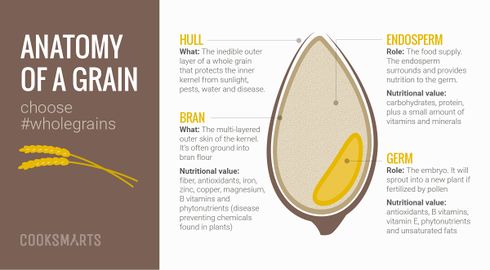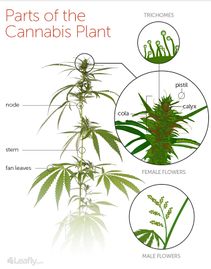"NJ2018 Glossary - Plant Varieties"의 두 판 사이의 차이
(→White sesame) |
(→Barnyard grass) |
||
| (사용자 2명의 중간 판 22개는 보이지 않습니다) | |||
| 1번째 줄: | 1번째 줄: | ||
{{NJ2018 TOC}} | {{NJ2018 TOC}} | ||
{{Contribution | {{Contribution | ||
| − | |contributor=[ | + | |contributor=[[치체오 안카 발렌티나|Ciceo Anca Valentina]] |
|my contribution= | |my contribution= | ||
}} | }} | ||
=='''Grains'''== | =='''Grains'''== | ||
| − | |||
| − | |||
<center> | <center> | ||
{|class="wikitable sortable" style="width:80%; text-align:center; background-color:white;" | {|class="wikitable sortable" style="width:80%; text-align:center; background-color:white;" | ||
| 46번째 줄: | 44번째 줄: | ||
|Hanja=五穀 | |Hanja=五穀 | ||
|Hangeul=오곡 | |Hangeul=오곡 | ||
| − | |RR= | + | |RR=ogok |
| − | |MR= | + | |MR=ogok |
|Pinyin= | |Pinyin= | ||
|If Common Name= | |If Common Name= | ||
| 57번째 줄: | 55번째 줄: | ||
|Alternate terms=five kinds of grains | |Alternate terms=five kinds of grains | ||
}} | }} | ||
| − | '''Definition''' | + | '''Definition''' |
| − | 다섯 가지 중요한 곡식, 또는 모든 곡물을 지칭하기도 함.<ref | + | |
| − | '''Explanation''' | + | 다섯 가지 중요한 곡식, 또는 모든 곡물을 지칭하기도 함.<ref>"[https://terms.naver.com/entry.nhn?docId=568033&cid=46631&categoryId=46631 오곡]", 한국민족문화대백과사전, 네이버 지식백과.</ref> |
| − | 예로부터 전해져오는 말로서 동양에서 일반적으로 통용하는 의미로는 곡물(穀物)을 총칭하는 말로 사용되며, 우리 나라에서는 다섯 가지 곡식 또는 중요한 곡식이나 모든 곡물 등의 뜻으로 쓰인다. 그런데 다섯 가지 곡식을 지칭하는 경우라도 일치되지 않고 여러 가지 설이 있다.<ref | + | |
| − | + | '''Explanation''' | |
| + | |||
| + | 예로부터 전해져오는 말로서 동양에서 일반적으로 통용하는 의미로는 곡물(穀物)을 총칭하는 말로 사용되며, 우리 나라에서는 다섯 가지 곡식 또는 중요한 곡식이나 모든 곡물 등의 뜻으로 쓰인다. 그런데 다섯 가지 곡식을 지칭하는 경우라도 일치되지 않고 여러 가지 설이 있다.<ref>"[https://terms.naver.com/entry.nhn?docId=568033&cid=46631&categoryId=46631 오곡]", 한국민족문화대백과사전, 네이버 지식백과.</ref> | ||
| + | |||
<center> | <center> | ||
| − | {|class="wikitable sortable" style="width: | + | {|class="wikitable sortable" style="width:50%; text-align:center; background-color:white;" |
| − | !style="width:15%;"| Hangeul || style="width:15%;"| Hanja || style="width:20%;" | English | + | !style="width:15%;"| Hangeul || style="width:15%;"| Hanja || style="width:20%;" | English |
|- | |- | ||
| − | |쌀 || 米 || [https://en.wikipedia.org/wiki/Rice rice] | + | |쌀 || 米 || [https://en.wikipedia.org/wiki/Rice rice] |
|- | |- | ||
| − | |조 || 粟 || [https://en.wikipedia.org/wiki/Foxtail_millet foxtail millet] | + | |조 || 粟 || [https://en.wikipedia.org/wiki/Foxtail_millet foxtail millet] |
|- | |- | ||
| − | |기장 || 黍 || [https://en.wikipedia.org/wiki/Proso_millet proso millet] | + | |기장 || 黍 || [https://en.wikipedia.org/wiki/Proso_millet proso millet] |
|- | |- | ||
| − | |보리 || 大麥|| [https://en.wikipedia.org/wiki/Barley barley] | + | |보리 || 大麥|| [https://en.wikipedia.org/wiki/Barley barley] |
|- | |- | ||
| − | |콩 || 大豆 || [https://en.wikipedia.org/wiki/Soybean soybean] | + | |콩 || 大豆 || [https://en.wikipedia.org/wiki/Soybean soybean] |
|} | |} | ||
</center> | </center> | ||
| − | |||
| − | |||
| + | '''Further Reading''' | ||
| − | + | *"[https://terms.naver.com/entry.nhn?docId=568033&cid=46631&categoryId=46631 오곡]", 한국민족문화대백과사전, 네이버 지식백과. | |
===Nine grains=== | ===Nine grains=== | ||
{{Term info | {{Term info | ||
|Hanja=九穀 | |Hanja=九穀 | ||
| − | |Hangeul=구곡 (아홉 가지 곡식) | + | |Hangeul=구곡(아홉 가지 곡식) |
| − | |RR= | + | |RR=gugok |
| − | |MR= | + | |MR=kugok |
| − | |Pinyin= | + | |Pinyin= jiŭ gŭ |
|If Common Name= | |If Common Name= | ||
|Common Name Hanja= | |Common Name Hanja= | ||
| 98번째 줄: | 98번째 줄: | ||
|Alternate terms=nine kinds of grains | |Alternate terms=nine kinds of grains | ||
}} | }} | ||
| − | '''Definition''' | + | '''Definition''' |
| − | 조선시대 임금의 친경전(親耕田)인 적전(籍田)에서 재배한 9가지 곡식.<ref | + | |
| − | 구곡은 아홉 종류의 곡식을 말하기도 하나 정확한 명칭은 모든 종류의 곡식을 통칭하는 용어이다. 그 기준을 정하는 것은 사료마다 다르며, 다섯 가지를 기준으로 한 것은 오곡, 아홉 가지 종류를 나열 한 것은 구곡이다. | + | 조선시대 임금의 친경전(親耕田)인 적전(籍田)에서 재배한 9가지 곡식.<ref>"[http://www.doopedia.co.kr/doopedia/master/master.do?_method=view&MAS_IDX=101013000694667 구곡]", 두피디아.</ref> |
| − | '''Explanation''' | + | |
| − | 권농책으로 국왕이 농경의 시범을 보이기 위하여 설정한 적전은 《경국대전》에 그 사항을 규정하고 임금이 경작하는 것을 원칙으로 부근의 농민이 경작하게 하였는데, '''벼·양(粱:기장의 일종)·기장·피·당서(唐黍)·팥·콩·보리·밀''' 등을 수확하여 종묘·사직의 제사에 사용하였다. 임금의 의례적인 친경은 한성 흥인문 밖에 설치한 동적전에서만 이루어졌으며, 18세기 속대전에 의하면 임금이 친히 경작하는 경우에는 정전법(井田法)에 따랐다고 한다.<ref | + | 구곡은 아홉 종류의 곡식을 말하기도 하나 정확한 명칭은 모든 종류의 곡식을 통칭하는 용어이다. 그 기준을 정하는 것은 사료마다 다르며, 다섯 가지를 기준으로 한 것은 오곡, 아홉 가지 종류를 나열 한 것은 구곡이다. |
| − | + | ||
| + | '''Explanation''' | ||
| + | |||
| + | 권농책으로 국왕이 농경의 시범을 보이기 위하여 설정한 적전은 《경국대전》에 그 사항을 규정하고 임금이 경작하는 것을 원칙으로 부근의 농민이 경작하게 하였는데, '''벼·양(粱:기장의 일종)·기장·피·당서(唐黍)·팥·콩·보리·밀''' 등을 수확하여 종묘·사직의 제사에 사용하였다. 임금의 의례적인 친경은 한성 흥인문 밖에 설치한 동적전에서만 이루어졌으며, 18세기 속대전에 의하면 임금이 친히 경작하는 경우에는 정전법(井田法)에 따랐다고 한다.<ref>"[http://www.doopedia.co.kr/doopedia/master/master.do?_method=view&MAS_IDX=101013000694667 구곡]", 두피디아.</ref> | ||
| + | |||
<center> | <center> | ||
| − | {|class="wikitable sortable" style="width: | + | {|class="wikitable sortable" style="width:50%; text-align:center; background-color:white;" |
| − | !style="width:15%;"| Hangeul || style="width:15%;"| Hanja || style="width:20%;" | English | + | !style="width:15%;"| Hangeul || style="width:15%;"| Hanja || style="width:20%;" | English |
|- | |- | ||
| − | |수수 || 高粱 || [https://en.wikipedia.org/wiki/Sorghum sorghum] | + | |수수 || 高粱 || [https://en.wikipedia.org/wiki/Sorghum sorghum] |
|- | |- | ||
| − | |옥수수 ||䵚|| [https://en.wikipedia.org/wiki/Maize corn] | + | |옥수수 ||䵚|| [https://en.wikipedia.org/wiki/Maize corn] |
|- | |- | ||
| − | |조 || 粟 || [https://en.wikipedia.org/wiki/Foxtail_millet foxtail millet] | + | |조 || 粟 || [https://en.wikipedia.org/wiki/Foxtail_millet foxtail millet] |
|- | |- | ||
| − | |보리 || 大麥|| [https://en.wikipedia.org/wiki/Barley barley] | + | |보리 || 大麥|| [https://en.wikipedia.org/wiki/Barley barley] |
|- | |- | ||
| − | |벼(쌀) || 米 || [https://en.wikipedia.org/wiki/Rice rice] | + | |벼(쌀) || 米 || [https://en.wikipedia.org/wiki/Rice rice] |
|- | |- | ||
| − | |참밀 || 小麥|| [https://en.wikipedia.org/wiki/Wheat wheat] | + | |참밀 || 小麥|| [https://en.wikipedia.org/wiki/Wheat wheat] |
|- | |- | ||
| − | |콩 || 大豆 || [https://en.wikipedia.org/wiki/Soybean soybean] | + | |콩 || 大豆 || [https://en.wikipedia.org/wiki/Soybean soybean] |
|- | |- | ||
| − | |팥 || 小豆|| [https://en.wikipedia.org/wiki/Adzuki_bean red bean] | + | |팥 || 小豆|| [https://en.wikipedia.org/wiki/Adzuki_bean red bean] |
|- | |- | ||
| − | |깨 || 胡麻 || [https://en.wikipedia.org/wiki/Sesame sesame] | + | |깨 || 胡麻 || [https://en.wikipedia.org/wiki/Sesame sesame] |
|} | |} | ||
</center> | </center> | ||
| − | |||
| − | |||
| − | |||
=='''Plant varieties'''== | =='''Plant varieties'''== | ||
| 136번째 줄: | 137번째 줄: | ||
|Hanja=大麥 | |Hanja=大麥 | ||
|Hangeul= 보리 (대맥) | |Hangeul= 보리 (대맥) | ||
| − | |RR= | + | |RR=bori |
| − | |MR= | + | |MR=pori |
|Pinyin= | |Pinyin= | ||
|If Common Name= | |If Common Name= | ||
| 150번째 줄: | 151번째 줄: | ||
{{Term info | {{Term info | ||
|Hanja=秋麥 | |Hanja=秋麥 | ||
| − | |Hangeul= | + | |Hangeul= 가을보리(추맥) |
| − | |RR= | + | |RR=chumaek |
| − | |MR= | + | |MR=ch'umaek |
|Pinyin= | |Pinyin= | ||
|If Common Name=yes | |If Common Name=yes | ||
|Common Name Hanja=秋麰 | |Common Name Hanja=秋麰 | ||
|Common Name Hangeul=추모 | |Common Name Hangeul=추모 | ||
| − | |Common Name RR= | + | |Common Name RR=chumo |
| − | |Common Name MR= | + | |Common Name MR=ch'umo |
|If Alternate= | |If Alternate= | ||
|Alternate terms= | |Alternate terms= | ||
| 165번째 줄: | 166번째 줄: | ||
{{Term info | {{Term info | ||
|Hanja=春麥 | |Hanja=春麥 | ||
| − | |Hangeul= | + | |Hangeul= 봄보리(춘맥) |
| − | |RR= | + | |RR=chunmaek |
| − | |MR= | + | |MR=ch'unmaek |
|Pinyin= | |Pinyin= | ||
|If Common Name=yes | |If Common Name=yes | ||
|Common Name Hanja=春麰 | |Common Name Hanja=春麰 | ||
|Common Name Hangeul=춘모 | |Common Name Hangeul=춘모 | ||
| − | |Common Name RR= | + | |Common Name RR=chunmo |
| − | |Common Name MR= | + | |Common Name MR=ch'unmo |
|If Alternate= | |If Alternate= | ||
|Alternate terms= | |Alternate terms= | ||
}} | }} | ||
| − | |||
| − | |||
| − | ''가을보리'' - 가을에 씨를 뿌려 이듬해 초여름에 거두는 보리 | + | '''Definition''' |
| − | ''봄보리'' - 이른 봄에 씨를 뿌려 첫여름에 거두는 보리.<ref | + | |
| − | '''Explanation''' | + | 주요 재배식물의 하나로서 높이 1m 정도다. 마디가 높고 원줄기는 둥글다. 속이 비어 있고 마디 사이가 길다. 잎은 어긋나고 넓은 줄 모양의 바소꼴로, 뒤로 젖혀지지 않는다. 너비 10∼15mm이고, 녹색 바탕에 다소 흰빛이 돈다. 잎자루는 잎집으로 되어 원줄기를 완전히 둘러싸고 있다. 녹색으로 털이 없으며, 잎혀[葉舌]는 짧다. 이삭은 줄기 끝에 달리고, 한 이삭에는 15∼20개의 마디가 있다. 한 마디에는 3개의 영화(穎花)가 달린다. 한 마디에 달리는 3개의 영화가 모두 여물어서 얼기설기 달린다. 그러므로 씨알의 배열이 6줄로 되어 여섯줄보리가 된다. 3영화 중 가운데 영화만 여물고 2개의 영화는 퇴화되어, 씨알이 2줄로 배열되는 것은 두줄보리가 된다. 중국에서는 은(殷)나라 때 갑골문자에서 보리에 해당하는 것이 기록되어 있었다고 한다. 보리가 오곡 중의 하나로 설정된 것이 BC 2700년경의 신농시대(神農時代)라는 점에서 고찰한다면, 그 재배 역사가 매우 오래됨을 알 수 있다. 한국에는 고대 중국으로부터 전파된 것으로 보이며, 일설에는 4∼5세기경에 보리가 한국에서 일본으로 전파되었다고 한다.<ref>"[http://www.doopedia.co.kr/doopedia/master/master.do?_method=view&MAS_IDX=101013000746546 보리]", 두피디아.</ref> |
| − | 보리는 파종시기에 따라 춘파형(春播形)인 봄보리, 추파형(秋播形)인 가을보리로 나누어지는데, 겨울의 추위가 심하여 가을보리를 파종하기 힘든 강원도, 평안도 같은 중북부 산간지방에서 봄에 보리를 파종한다. 대표적인 봄보리의 품종으로는 완주봄보리와 복대(福垈)가 있다.<ref | + | |
| + | *''가을보리'' - 가을에 씨를 뿌려 이듬해 초여름에 거두는 보리.<ref>[http://stdweb2.korean.go.kr/search/List_dic.jsp 표준국어대사전]</ref> | ||
| + | *''봄보리'' - 이른 봄에 씨를 뿌려 첫여름에 거두는 보리.<ref>[http://krdic.naver.com/seo.nhn?id=38006600 네이버국어사전]</ref> | ||
| + | |||
| + | '''Explanation''' | ||
| + | |||
| + | 보리는 파종시기에 따라 춘파형(春播形)인 봄보리, 추파형(秋播形)인 가을보리로 나누어지는데, 겨울의 추위가 심하여 가을보리를 파종하기 힘든 강원도, 평안도 같은 중북부 산간지방에서 봄에 보리를 파종한다. 대표적인 봄보리의 품종으로는 완주봄보리와 복대(福垈)가 있다.<ref>"[http://folkency.nfm.go.kr/kr/topic/%EB%B4%84%EB%B3%B4%EB%A6%AC%ED%8C%8C%EC%A2%85/4054 봄보리파종]", 한국민속대백과사전, 국립민속박물관.</ref> | ||
<center> | <center> | ||
{|class="wikitable sortable" style="width:80%; text-align:center; background-color:white;" | {|class="wikitable sortable" style="width:80%; text-align:center; background-color:white;" | ||
| − | !style="width:15%;"| Plant || style="width:30%;"| Variety || style="width:15%;" | Chinese || style="width:40%;" | Hangeul( | + | !style="width:15%;"| Plant || style="width:30%;"| Variety || style="width:15%;" | Chinese || style="width:40%;" | Hangeul (Common Name) |
|- | |- | ||
| − | |Barley || autumn barley || 秋麥 || 가을보리 | + | |rowspan="2"| Barley || autumn barley || 秋麥 || 가을보리(추모) |
|- | |- | ||
| − | + | | spring barley || 春麰 || 봄보리(춘모) | |
|} | |} | ||
</center> | </center> | ||
| − | '''Multimedia''' | + | '''Multimedia''' |
| − | <gallery mode=packed heights= | + | |
| + | <gallery mode=packed heights=180px> | ||
File:Barley_1.jpg|보리 | File:Barley_1.jpg|보리 | ||
File:Barley_2.jpg|보리 | File:Barley_2.jpg|보리 | ||
| 202번째 줄: | 208번째 줄: | ||
File:Barley4.jpg|보리쌀 | File:Barley4.jpg|보리쌀 | ||
</gallery> | </gallery> | ||
| − | |||
| − | |||
| − | |||
| − | + | '''Further Reading''' | |
| + | |||
| + | *"[http://folkency.nfm.go.kr/kr/topic/%EB%B4%84%EB%B3%B4%EB%A6%AC%ED%8C%8C%EC%A2%85/4054 봄보리파종]", 한국민속대백과사전, 국립민속박물관. | ||
| + | *"[http://www.doopedia.co.kr/doopedia/master/master.do?_method=view&MAS_IDX=101013000746546 보리]", 두피디아. | ||
===Barnyard grass=== | ===Barnyard grass=== | ||
| 212번째 줄: | 218번째 줄: | ||
|Hanja=稷 | |Hanja=稷 | ||
|Hangeul=피 | |Hangeul=피 | ||
| − | |RR= | + | |RR=pi |
| − | |MR= | + | |MR=p'i |
|Pinyin= | |Pinyin= | ||
| − | |If Common Name= | + | |If Common Name=yes |
| − | |Common Name Hanja= | + | |Common Name Hanja=姜稷 |
| − | |Common Name Hangeul= | + | |Common Name Hangeul=강직 |
| − | |Common Name RR= | + | |Common Name RR=gangjik |
| − | |Common Name MR= | + | |Common Name MR=kangjik |
|If Alternate=yes | |If Alternate=yes | ||
|Alternate terms=학명: ''Echinochloa crus-galli var. frumentacea ROXB.WIGHT'' | |Alternate terms=학명: ''Echinochloa crus-galli var. frumentacea ROXB.WIGHT'' | ||
}} | }} | ||
| − | ====Late-sowing quick-ripening variety | + | ====Late-sowing quick-ripening variety==== |
{{Term info | {{Term info | ||
|Hanja=晩種 | |Hanja=晩種 | ||
| − | |Hangeul= 만종 | + | |Hangeul=만종 |
| − | |RR= | + | |RR=manjong |
| − | |MR= | + | |MR=manjong |
|Pinyin= | |Pinyin= | ||
| − | |If Common Name= | + | |If Common Name= |
| − | |Common Name Hanja= | + | |Common Name Hanja= |
| − | |Common Name Hangeul= | + | |Common Name Hangeul= |
| − | |Common Name RR= | + | |Common Name RR= |
| − | |Common Name MR= | + | |Common Name MR= |
|If Alternate= | |If Alternate= | ||
|Alternate terms= | |Alternate terms= | ||
}} | }} | ||
| − | '''Definition''' | + | |
| − | 벼과에 속하는 일년생 초본식물. 높이는 1m에 달하고 곧추 자란다. 잎은 길이 30∼50㎝, 너비 2∼3㎝로서 가장자리에 잔 톱니가 있다. 밑부분은 긴 엽초(葉鞘)로 되어 있으며, 엽설(葉舌)이 없다. 꽃은 8∼9월에 피며, 원추화서를 이룬다. 원산지는 인도로 추정되며, 우리 나라에는 중국을 거쳐 전래된 것으로 여겨진다.<ref | + | '''Definition''' |
| − | '''Explanation''' | + | |
| + | 벼과에 속하는 일년생 초본식물. 높이는 1m에 달하고 곧추 자란다. 잎은 길이 30∼50㎝, 너비 2∼3㎝로서 가장자리에 잔 톱니가 있다. 밑부분은 긴 엽초(葉鞘)로 되어 있으며, 엽설(葉舌)이 없다. 꽃은 8∼9월에 피며, 원추화서를 이룬다. 원산지는 인도로 추정되며, 우리 나라에는 중국을 거쳐 전래된 것으로 여겨진다.<ref>"[http://encykorea.aks.ac.kr/Contents/SearchNavi?keyword=%ED%94%BC&ridx=0&tot=219 피]", 한국민족문화대백과사전, 한국학중앙연구원.</ref> | ||
| + | |||
| + | '''Explanation''' | ||
| + | |||
{{Contribution |contributor=Lyndsey Twining |my contribution=Cultivation methods and timeline}} | {{Contribution |contributor=Lyndsey Twining |my contribution=Cultivation methods and timeline}} | ||
*Cultivation Methods | *Cultivation Methods | ||
| 252번째 줄: | 262번째 줄: | ||
***Early-sowing variety (稷): 3rd month 1st week - 4th month 1st week | ***Early-sowing variety (稷): 3rd month 1st week - 4th month 1st week | ||
***Late-sowing quick-ripening variety (晩種): 6th month 1st week at latest when doing double cropping | ***Late-sowing quick-ripening variety (晩種): 6th month 1st week at latest when doing double cropping | ||
| − | '''Multimedia''' | + | |
| − | <gallery mode=packed heights= | + | '''Multimedia''' |
| + | |||
| + | <gallery mode=packed heights=180px> | ||
File:Barnyard_grass1.jpg| | File:Barnyard_grass1.jpg| | ||
File:Barnyard2.JPG| | File:Barnyard2.JPG| | ||
| 260번째 줄: | 272번째 줄: | ||
</gallery> | </gallery> | ||
| − | '''Further Reading''' | + | '''Further Reading''' |
| − | * | + | *"[http://encykorea.aks.ac.kr/Contents/SearchNavi?keyword=%ED%94%BC&ridx=0&tot=219 피]", 한국민족문화대백과사전, 한국학중앙연구원. |
| − | + | *"[https://en.wikipedia.org/wiki/Echinochloa_crus-galli Echinochloa crus-galli]", Wikipedia. | |
| − | * | ||
| − | |||
| − | |||
| − | |||
===Buckwheat=== | ===Buckwheat=== | ||
| 272번째 줄: | 280번째 줄: | ||
|Hanja=蕎麥 | |Hanja=蕎麥 | ||
|Hangeul=교맥 | |Hangeul=교맥 | ||
| − | |RR= | + | |RR=gyomaek |
| − | |MR= | + | |MR=kyomaek |
|Pinyin= | |Pinyin= | ||
|If Common Name=yes | |If Common Name=yes | ||
|Common Name Hanja=木麥 | |Common Name Hanja=木麥 | ||
|Common Name Hangeul=메밀 | |Common Name Hangeul=메밀 | ||
| − | |Common Name RR= | + | |Common Name RR=memil |
| − | |Common Name MR= | + | |Common Name MR=memil |
|If Alternate=yes | |If Alternate=yes | ||
|Alternate terms=학명: ''Fagopyrum esculentum'' | |Alternate terms=학명: ''Fagopyrum esculentum'' | ||
}} | }} | ||
| − | '''Definition''' | + | '''Definition''' |
| − | 이 글에서 교맥은 메밀이다. 종류는 대부분 여름 메밀과 가을 메밀로 나누어지는데, 여름 메밀은 5월 중순에서 하순 사이에 파종되고, 가을 메밀은 7월 중에 파종된다. 수확하는 시기는 여름 메밀의 경우 7월 하순이고 가을 메밀은 10월에 수확한다. <ref | + | |
| − | '''Multimedia''' | + | 이 글에서 교맥은 메밀이다. 종류는 대부분 여름 메밀과 가을 메밀로 나누어지는데, 여름 메밀은 5월 중순에서 하순 사이에 파종되고, 가을 메밀은 7월 중에 파종된다. 수확하는 시기는 여름 메밀의 경우 7월 하순이고 가을 메밀은 10월에 수확한다. <ref>"[http://encykorea.aks.ac.kr/Contents/SearchNavi?keyword=%EB%A9%94%EB%B0%80&ridx=0&tot=17 메밀]", 한국민족대백과사전, 한국학중앙연구원.</ref> |
| − | <gallery mode=packed heights= | + | |
| + | '''Multimedia''' | ||
| + | |||
| + | <gallery mode=packed heights=180px> | ||
File:Memil1.JPG|꽃 | File:Memil1.JPG|꽃 | ||
File:Memil2.JPG|꽃 | File:Memil2.JPG|꽃 | ||
| 293번째 줄: | 304번째 줄: | ||
File:Buckwheat6.JPG|씨 | File:Buckwheat6.JPG|씨 | ||
</gallery> | </gallery> | ||
| − | |||
| − | |||
| − | |||
| − | |||
| − | + | '''Further Reading''' | |
| + | |||
| + | {{Contribution |contributor=이창섭 | ||
| + | |my contribution=}} | ||
| + | *"[https://ko.wikipedia.org/wiki/%EB%A9%94%EB%B0%80 메밀]", 위키백과. | ||
| + | *50대 시골청년, "[https://m.blog.naver.com/PostView.nhn?blogId=jchong621&logNo=220926030704&proxyReferer=https%3A%2F%2Fwww.google.co.kr%2F 메밀 재배법 공부하여 재배 준비합니다.]", 의령홍이네 표고버섯농장, 네이버 블로그, 2017년 2월 3일. | ||
===Hemp=== | ===Hemp=== | ||
{{Term info | {{Term info | ||
|Hanja=麻 | |Hanja=麻 | ||
| − | |Hangeul=마 (삼, 대마) | + | |Hangeul=마(삼, 대마) |
| − | |RR= | + | |RR=ma |
| − | |MR= | + | |MR=ma |
|Pinyin= | |Pinyin= | ||
|If Common Name= | |If Common Name= | ||
| 316번째 줄: | 328번째 줄: | ||
}} | }} | ||
====Early-sowing variety==== | ====Early-sowing variety==== | ||
| − | See [ | + | See ''[[NJ2018_Cultivating_Hemp|Cultivating Hemp]]'' - the original text only mentions the late-sowing variety. |
====Late-sowing variety==== | ====Late-sowing variety==== | ||
{{Term info | {{Term info | ||
|Hanja=晩種 | |Hanja=晩種 | ||
|Hangeul=만종 | |Hangeul=만종 | ||
| − | |RR= | + | |RR=manjong |
| − | |MR= | + | |MR=manjong |
|Pinyin= | |Pinyin= | ||
|If Common Name= | |If Common Name= | ||
| 332번째 줄: | 344번째 줄: | ||
|Alternate terms= | |Alternate terms= | ||
}} | }} | ||
| − | '''Definition''' | + | |
| − | 삼을 대마(大麻)·마(麻)라고도 한다. 중앙아시아가 원산지이며 열대 지방과 온대 지방에서 섬유 식물로 널리 재배하고 있다. 곧은 뿌리는 지하 30∼40cm까지 뻗어 들어가지만 곁뿌리가 발달하지 않아 잘 뽑힌다. 높이는 온대 지방에서 3m에 달하고 열대 지방에서는 6m까지 자란다. 줄기는 곧게 서고 횡단면이 둔한 사각형이며 잔털이 있고 속이 비어 있으며 녹색이다. 줄기 표면에는 세로로 골이 파인다.<ref | + | '''Definition''' |
| − | '''Explanation''' | + | |
| + | 삼을 대마(大麻)·마(麻)라고도 한다. 중앙아시아가 원산지이며 열대 지방과 온대 지방에서 섬유 식물로 널리 재배하고 있다. 곧은 뿌리는 지하 30∼40cm까지 뻗어 들어가지만 곁뿌리가 발달하지 않아 잘 뽑힌다. 높이는 온대 지방에서 3m에 달하고 열대 지방에서는 6m까지 자란다. 줄기는 곧게 서고 횡단면이 둔한 사각형이며 잔털이 있고 속이 비어 있으며 녹색이다. 줄기 표면에는 세로로 골이 파인다.<ref>"[http://www.doopedia.co.kr/doopedia/master/master.do?_method=view&MAS_IDX=101013000797395 삼]", 두피디아.</ref> | ||
| + | |||
| + | '''Explanation''' | ||
| + | |||
{{Contribution |contributor=Ciceo Anca Valentina |my contribution=Cultivation timeline and methods}} | {{Contribution |contributor=Ciceo Anca Valentina |my contribution=Cultivation timeline and methods}} | ||
*Cultivation Timeline | *Cultivation Timeline | ||
| 341번째 줄: | 357번째 줄: | ||
***2nd plow: 'In the first ''sun'' of the second lunar month, plow again' (二月上旬, 更耕之。)<br/> (Advice given about plowing in the middle or last ''sun'', too, and it mentions about the spring thaw coming later in the northern region) | ***2nd plow: 'In the first ''sun'' of the second lunar month, plow again' (二月上旬, 更耕之。)<br/> (Advice given about plowing in the middle or last ''sun'', too, and it mentions about the spring thaw coming later in the northern region) | ||
**Sowing: | **Sowing: | ||
| − | ***Only the sowing time of late-planting varieties is mentioned: 'The late-planting varieties can be sowed anytime within ten days before or after the summer solstice.' (又有晩種者, 夏至前後十日內, 皆可種也。) | + | ***Only the sowing time of late-planting varieties is mentioned: 'The late-planting varieties can be sowed anytime within ten days before or after the summer solstice.' (又有晩種者, 夏至前後十日內, 皆可種也。) |
*Cultivation Methods | *Cultivation Methods | ||
| − | **Plowing method: 'Plow three times lengthwise and three times breadththwise'. (耕之縱三橫三) | + | **Plowing method: 'Plow three times lengthwise and three times breadththwise'. (耕之縱三橫三) |
**Fertilization method (2 times, 1st after plowing the soil, 2nd after leveling the soil): | **Fertilization method (2 times, 1st after plowing the soil, 2nd after leveling the soil): | ||
| − | ***'Spread cattle and horse manure [over the field]'.(布牛馬糞。) | + | ***'Spread cattle and horse manure [over the field]'.(布牛馬糞。) |
| − | ***'On top [of the soil], also spread cattle and horse manure'. (其上, 又布牛馬糞。) | + | ***'On top [of the soil], also spread cattle and horse manure'. (其上, 又布牛馬糞。) |
| − | **Leveling the soil method: 'With a '' | + | **Leveling the soil method: 'With a ''mokjak'' known as ''soheulla'' and a ''cheolchipa'' known as ''susueum'' , level out the soil well, and then evenly and densely tamp it down with feet'. (以木斫【鄕名斫訖羅】及鐵齒擺【鄕名手愁音】, 熟治使平, 後足踏均密。)<br/> |
| − | **Sowing method: 'When sowing seeds, it is also necessary to sow them evenly and densely' (撒種, 又須均須密。) | + | **Sowing method: 'When sowing seeds, it is also necessary to sow them evenly and densely' (撒種, 又須均須密。) |
| − | **Weeding method: 'If there are weeds when the hemp has reached three ''chon'' [approx. 6 cm], then weed them [with a hoe]. Do not weed more than once'.(麻長三寸許, 有雜草, 則鋤之。【不過一鋤。..) | + | **Weeding method: 'If there are weeds when the hemp has reached three ''chon'' [approx. 6 cm], then weed them [with a hoe]. Do not weed more than once'.(麻長三寸許, 有雜草, 則鋤之。【不過一鋤。..) |
| − | '''Multimedia''' | + | |
| − | <gallery mode=packed heights= | + | '''Multimedia''' |
| + | |||
| + | <gallery mode=packed heights=180px> | ||
File:Hemp1.JPG|대마 | File:Hemp1.JPG|대마 | ||
File:Hemp2.JPG|대마잎 | File:Hemp2.JPG|대마잎 | ||
File:Hemp3.JPG|씨 | File:Hemp3.JPG|씨 | ||
</gallery> | </gallery> | ||
| − | |||
| − | |||
| − | |||
| − | + | '''Further Reading''' | |
| − | + | *"[https://en.wikipedia.org/wiki/Hemp Hemp]", Wikipedia. | |
| + | *"[http://www.doopedia.co.kr/doopedia/master/master.do?_method=view&MAS_IDX=101013000797395 삼]", 두피디아. | ||
===Millet (foxtail millet and proso millet)=== | ===Millet (foxtail millet and proso millet)=== | ||
{{Term info | {{Term info | ||
| − | |Hanja=粟 | + | |Hanja=粟 / 黍 |
| − | |Hangeul=조 | + | |Hangeul=조 / 기장 |
| − | |RR= | + | |RR=jo / gijang |
| − | |MR= | + | |MR=cho / kijang |
|Pinyin= | |Pinyin= | ||
|If Common Name= | |If Common Name= | ||
| 376번째 줄: | 392번째 줄: | ||
|Common Name MR= | |Common Name MR= | ||
|If Alternate=yes | |If Alternate=yes | ||
| − | |Alternate terms=학명: ''Setaria Italica'' | + | |Alternate terms=학명: ''Setaria Italica'' / ''Panicum miliaceum'' |
}} | }} | ||
| − | ====''Cheongnyang'' variety ('' | + | ====''Cheongnyang'' variety (''saengdongjeom'')*<ref>More research needed here. See the chapter [[NJ2018_Cultivating_Proso_and_Foxtail_Millet|Cultivating Proso and Foxtail Millet]].</ref>==== |
{{Term info | {{Term info | ||
|Hanja=靑梁 | |Hanja=靑梁 | ||
|Hangeul=청량 | |Hangeul=청량 | ||
| − | |RR= | + | |RR=cheongnyang |
| − | |MR= | + | |MR=ch'ŏngnyang |
|Pinyin= | |Pinyin= | ||
|If Common Name=yes | |If Common Name=yes | ||
|Common Name Hanja=生動粘 | |Common Name Hanja=生動粘 | ||
|Common Name Hangeul=생동점 | |Common Name Hangeul=생동점 | ||
| − | |Common Name RR= | + | |Common Name RR=saengdongjeom |
| − | |Common Name MR= | + | |Common Name MR=saengdongjŏm |
|If Alternate= | |If Alternate= | ||
|Alternate terms= | |Alternate terms= | ||
}} | }} | ||
| − | |||
====Early-sowing proso/foxtail millet==== | ====Early-sowing proso/foxtail millet==== | ||
{{Term info | {{Term info | ||
|Hanja=早黍 / 早粟 | |Hanja=早黍 / 早粟 | ||
|Hangeul=올기장 / 올조 | |Hangeul=올기장 / 올조 | ||
| − | |RR= | + | |RR=olgijang / oljo |
| − | |MR= | + | |MR=olgijang / oljo |
|Pinyin= | |Pinyin= | ||
|If Common Name= | |If Common Name= | ||
| 413번째 줄: | 428번째 줄: | ||
|Hanja=晩黍 / 晩粟 | |Hanja=晩黍 / 晩粟 | ||
|Hangeul=늦기장 / 늦조 | |Hangeul=늦기장 / 늦조 | ||
| − | |RR= | + | |RR=neutgijang / neutjo |
| − | |MR= | + | |MR=nŭtkijang / nŭtcho |
|Pinyin= | |Pinyin= | ||
|If Common Name= | |If Common Name= | ||
| 424번째 줄: | 439번째 줄: | ||
|Alternate terms= | |Alternate terms= | ||
}} | }} | ||
| − | ====Late-sowing quick-ripening variety ('' | + | ====Late-sowing quick-ripening variety (''jeommulgok'')==== |
{{Term info | {{Term info | ||
|Hanja=晩種早熟 | |Hanja=晩種早熟 | ||
|Hangeul=만종 조숙 | |Hangeul=만종 조숙 | ||
| − | |RR= | + | |RR=manjong josuk |
| − | |MR= | + | |MR=manjong chosuk |
|Pinyin= | |Pinyin= | ||
|If Common Name=yes | |If Common Name=yes | ||
|Common Name Hanja=占勿谷 | |Common Name Hanja=占勿谷 | ||
|Common Name Hangeul=점물곡 | |Common Name Hangeul=점물곡 | ||
| − | |Common Name RR= | + | |Common Name RR=jeommulgok |
| − | |Common Name MR= | + | |Common Name MR=chŏmmulgok |
|If Alternate= | |If Alternate= | ||
|Alternate terms= | |Alternate terms= | ||
}} | }} | ||
| − | '''Definition''' | + | |
| − | *조 (foxtail millet): 영문명으로 ‘Barn grass’ 또는 ‘Chinese corn’이라고 한다. 속명의 ‘Setara’는 라틴어의 ‘seta(강한 털)’에서 유래하며, 종명의 ‘italica’는 '이탈리아산의' 를 뜻한다. 밭에서 재배하며 높이 1∼1.5m로 가지를 치지 않는다. 잎은 바소꼴에 가장자리에 잔 톱니가 있으며 밑부분이 잎집[葉齧]으로 된다. 잎혀는 가늘털이 밀생한다.<ref | + | '''Definition''' |
| − | *기장 (proso millet): 재배식물이다. 높이는 50∼120cm로 곧게 자란다. 잎은 어긋나고 길이 30∼50cm, 나비 1∼2.5cm로서 털이 드문드문 있으며 밑부분은 긴 잎집으로 되고 털이 있다. 분열한 줄기마다 이삭이 나오고 원추꽃차례[圓錐花序]를 이루며 고개를 숙인다. 열매는 익으면 떨어지기 쉽고 도정하면 조와 비슷하나 조보다는 굵다. 밥이나 떡을 만들고 사료로도 쓴다.<ref | + | |
| − | '''Multimedia''' | + | *조 (foxtail millet): 영문명으로 ‘Barn grass’ 또는 ‘Chinese corn’이라고 한다. 속명의 ‘Setara’는 라틴어의 ‘seta(강한 털)’에서 유래하며, 종명의 ‘italica’는 '이탈리아산의' 를 뜻한다. 밭에서 재배하며 높이 1∼1.5m로 가지를 치지 않는다. 잎은 바소꼴에 가장자리에 잔 톱니가 있으며 밑부분이 잎집[葉齧]으로 된다. 잎혀는 가늘털이 밀생한다.<ref>"[http://www.doopedia.co.kr/doopedia/master/master.do?_method=view&MAS_IDX=101013000858935 조]", 두피디아.</ref> |
| + | *기장 (proso millet): 재배식물이다. 높이는 50∼120cm로 곧게 자란다. 잎은 어긋나고 길이 30∼50cm, 나비 1∼2.5cm로서 털이 드문드문 있으며 밑부분은 긴 잎집으로 되고 털이 있다. 분열한 줄기마다 이삭이 나오고 원추꽃차례[圓錐花序]를 이루며 고개를 숙인다. 열매는 익으면 떨어지기 쉽고 도정하면 조와 비슷하나 조보다는 굵다. 밥이나 떡을 만들고 사료로도 쓴다.<ref>"[http://www.doopedia.co.kr/doopedia/master/master.do?_method=view&MAS_IDX=101013000750952 기장]", 두피디아.</ref> | ||
| + | |||
| + | '''Multimedia''' | ||
| + | |||
*조 (''Setaria Italica'', foxtail millet) | *조 (''Setaria Italica'', foxtail millet) | ||
| − | <gallery mode=packed heights= | + | <gallery mode=packed heights=180px> |
File:Foxtailmillet1.JPG|조 | File:Foxtailmillet1.JPG|조 | ||
File:Foxtailmillet2.JPG|조 | File:Foxtailmillet2.JPG|조 | ||
| 451번째 줄: | 470번째 줄: | ||
*기장 (''Panicum miliaceum'', proso millet) | *기장 (''Panicum miliaceum'', proso millet) | ||
| − | <gallery mode=packed heights= | + | <gallery mode=packed heights=180px> |
File:Prosomillet1.JPG|기장 | File:Prosomillet1.JPG|기장 | ||
File:Prosomillet2.JPG|기장 | File:Prosomillet2.JPG|기장 | ||
| 458번째 줄: | 477번째 줄: | ||
</gallery> | </gallery> | ||
| − | + | <html> | |
| − | + | <iframe width="560" height="315" src="https://www.youtube.com/embed/FCpuIW-IpEQ" frameborder="0" allow="autoplay; encrypted-media" allowfullscreen></iframe> | |
| − | + | </html> | |
| − | |||
| − | |||
| − | |||
| − | |||
| − | |||
| − | + | '''Further Reading''' | |
| − | + | *"[https://en.wikipedia.org/wiki/Foxtail_millet Foxtail Millet]", Wikipedia. | |
| + | *"[http://www.doopedia.co.kr/doopedia/master/master.do?_method=view&MAS_IDX=101013000858935 조]", 두피디아. | ||
| + | *"[https://en.wikipedia.org/wiki/Proso_millet Proso Millet]", Wikipedia. | ||
| + | *"[http://www.doopedia.co.kr/doopedia/master/master.do?_method=view&MAS_IDX=101013000750952 기장]", 두피디아 | ||
| + | *E.A. Oelke, E.S. Oplinger, D.H. Putnam, B.R. Durgan, J.D. Doll, and D.J. Undersander, "[https://hort.purdue.edu/newcrop/afcm/millet.html Millets]", ''Alternative Field Crops Manual'', University of Wisconsin-Extension. | ||
===Mung beans=== | ===Mung beans=== | ||
| 474번째 줄: | 492번째 줄: | ||
|Hanja=菉豆 | |Hanja=菉豆 | ||
|Hangeul=녹두 | |Hangeul=녹두 | ||
| − | |RR= | + | |RR=nokdu |
| − | |MR= | + | |MR=noktu |
|Pinyin= | |Pinyin= | ||
|If Common Name= | |If Common Name= | ||
| 485번째 줄: | 503번째 줄: | ||
|Alternate terms=학명: ''Vigna radiata'' | |Alternate terms=학명: ''Vigna radiata'' | ||
}} | }} | ||
| − | '''Definition''' | + | |
| − | 안두(安豆)·길두(吉豆)라고도 한다. 따뜻한 기후의 양토(壤土:모래와 점토가 알맞게 섞인 검은빛의 흙)에서 잘 자란다. 높이 30∼80cm이다. 줄기는 가늘고 세로로 난 맥이 있고 10여 개의 마디가 있으며 가지를 친다. 잎은 1쌍의 떡잎과 갓 생겨난 잎이 나온 뒤, 3개의 작은잎으로 된 겹잎이 나온다.<ref | + | '''Definition''' |
| − | + | ||
| − | '''Multimedia''' | + | 안두(安豆)·길두(吉豆)라고도 한다. 따뜻한 기후의 양토(壤土:모래와 점토가 알맞게 섞인 검은빛의 흙)에서 잘 자란다. 높이 30∼80cm이다. 줄기는 가늘고 세로로 난 맥이 있고 10여 개의 마디가 있으며 가지를 친다. 잎은 1쌍의 떡잎과 갓 생겨난 잎이 나온 뒤, 3개의 작은잎으로 된 겹잎이 나온다.<ref>"[http://www.doopedia.co.kr/doopedia/master/master.do?_method=view&MAS_IDX=101013000833292 녹두]", 두피디아.</ref> |
| − | <gallery mode=packed heights= | + | |
| + | '''Multimedia''' | ||
| + | |||
| + | <gallery mode=packed heights=180px> | ||
File:Mungbeans1.JPG|녹두 | File:Mungbeans1.JPG|녹두 | ||
File:Mungbeans2.JPG|녹두 | File:Mungbeans2.JPG|녹두 | ||
File:Mungbeans3.JPG|녹두콩 | File:Mungbeans3.JPG|녹두콩 | ||
</gallery> | </gallery> | ||
| − | |||
| − | |||
| − | |||
| − | |||
| − | + | '''Further Reading''' | |
| + | *"[https://en.wikipedia.org/wiki/Mung_bean Mung Beans]", Wikipedia. | ||
| + | *"[http://www.doopedia.co.kr/doopedia/master/master.do?_method=view&MAS_IDX=101013000833292 녹두]", 두피디아. | ||
===Perilla=== | ===Perilla=== | ||
| 505번째 줄: | 524번째 줄: | ||
|Hanja=水蘇子 | |Hanja=水蘇子 | ||
|Hangeul=수소자 | |Hangeul=수소자 | ||
| − | |RR= | + | |RR=susoja |
| − | |MR= | + | |MR=susoja |
|Pinyin= | |Pinyin= | ||
|If Common Name=yes | |If Common Name=yes | ||
|Common Name Hanja=水荏子 | |Common Name Hanja=水荏子 | ||
|Common Name Hangeul=들깨 (수임자) | |Common Name Hangeul=들깨 (수임자) | ||
| − | |Common Name RR= | + | |Common Name RR=deulkkae |
| − | |Common Name MR= | + | |Common Name MR=tŭlkkae |
|If Alternate=yes | |If Alternate=yes | ||
|Alternate terms=wild sesame (?); 학명: ''Perilla frutescens'' var. japonica HARA | |Alternate terms=wild sesame (?); 학명: ''Perilla frutescens'' var. japonica HARA | ||
}} | }} | ||
| − | '''Definition''' | + | |
| − | 자소(紫蘇)·일본자소라고도 한다. 인도의 고지(高地)와 중국 중남부 등이 원산지이며, 한국에는 통일신라시대에 참깨와 함께 들깨를 재배한 기록이 있는 것으로 보아 옛날부터 전국적으로 재배된 것으로 보인다. 낮은 지대의 인가 근처에 야생으로 자란다.<ref | + | '''Definition''' |
| − | + | ||
| − | 『향약집성방』에는 임자(荏子) 또는 수임자(水荏子)라는 이름으로 나타난다. 학명은 Perilla frutescens var. japonica HARA이다. 높이는 60∼90㎝로 사각이 지며 곧게 자라고 긴털이 있다. 잎은 마주나며, 길이가 7∼12㎝로 가장자리에 둔한 톱니가 있다. 꽃은 8∼9월에 흰색으로 핀다. 열매는 분과(分果:갈라진 여러개의 자방으로 된 과실)로 꽃받침 속에 들어 있고 둥글다. <ref | + | 자소(紫蘇)·일본자소라고도 한다. 인도의 고지(高地)와 중국 중남부 등이 원산지이며, 한국에는 통일신라시대에 참깨와 함께 들깨를 재배한 기록이 있는 것으로 보아 옛날부터 전국적으로 재배된 것으로 보인다. 낮은 지대의 인가 근처에 야생으로 자란다.<ref>"[http://www.doopedia.co.kr/doopedia/master/master.do?_method=view&MAS_IDX=101013000837377 들깨]", 두피디아.</ref> |
| − | '''Explanation''' | + | |
| + | 『향약집성방』에는 임자(荏子) 또는 수임자(水荏子)라는 이름으로 나타난다. 학명은 Perilla frutescens var. japonica HARA이다. 높이는 60∼90㎝로 사각이 지며 곧게 자라고 긴털이 있다. 잎은 마주나며, 길이가 7∼12㎝로 가장자리에 둔한 톱니가 있다. 꽃은 8∼9월에 흰색으로 핀다. 열매는 분과(分果:갈라진 여러개의 자방으로 된 과실)로 꽃받침 속에 들어 있고 둥글다. <ref>"[http://encykorea.aks.ac.kr/Contents/SearchNavi?keyword=%EB%93%A4%EA%B9%A8&ridx=0&tot=6 들깨]", 한국민족문화대백과사전, 한국학중앙연구원.</ref> | ||
| + | |||
| + | '''Explanation''' | ||
*Existing Perilla species: | *Existing Perilla species: | ||
**''P. frutescens'' – also called Korean perilla or ''deulkkae''; the leaves are called ''kkaennip'' | **''P. frutescens'' – also called Korean perilla or ''deulkkae''; the leaves are called ''kkaennip'' | ||
**''P. frutescens'' var. ''crispa'' – also called shiso, tía tô, or Japanese Basil | **''P. frutescens'' var. ''crispa'' – also called shiso, tía tô, or Japanese Basil | ||
| − | **''P. frutescens'' var. ''hirtella'' – also called lemon perilla<ref | + | **''P. frutescens'' var. ''hirtella'' – also called lemon perilla<ref>"[https://en.wikipedia.org/wiki/Perilla Perilla]", Wikipedia.</ref> |
| + | *In the [[NJ2018_Cultivating_Proso_and_Foxtail_Millet|Cultivating Proso and Foxtail Millet]] chapter there is a description on how to sow proso/foxtail millet: 'sow a mix of wild sesame seeds with proso/foxtail millet. One part wild sesame seeds, three parts pro so/foxtail millet.' The Chinese characters for ''wild sesame seed'' are 水荏子(수임자), which is the common name for perilla (들깨). | ||
| + | '''Multimedia''' | ||
| − | + | <gallery mode=packed heights=180px> | |
| − | |||
| − | <gallery mode=packed heights= | ||
File:Perilla1.jpg| | File:Perilla1.jpg| | ||
File:Perilla2.jpg| | File:Perilla2.jpg| | ||
| 536번째 줄: | 558번째 줄: | ||
File:Perilla7.jpg| | File:Perilla7.jpg| | ||
</gallery> | </gallery> | ||
| − | |||
| − | |||
| − | |||
| − | |||
| − | |||
| − | + | '''Further Reading''' | |
| − | + | *"[https://en.wikipedia.org/wiki/Perilla Perilla]", Wikipedia. | |
| + | *"[http://encykorea.aks.ac.kr/Contents/SearchNavi?keyword=%EB%93%A4%EA%B9%A8&ridx=0&tot=6 들깨]", 한국민족문화대백과사전, 한국학중앙연구원. | ||
| + | *"[http://www.doopedia.co.kr/doopedia/master/master.do?_method=view&MAS_IDX=101013000837377 들깨]", 두피디아. | ||
| + | *"[http://www.dramasrok.com/2013/08/perilla-sesame-difference/ Difference between sesame and perilla]", Life in Korea (blog), August 26, 2013. | ||
===Red bean=== | ===Red bean=== | ||
| 549번째 줄: | 569번째 줄: | ||
|Hanja=小豆 | |Hanja=小豆 | ||
|Hangeul=팥 | |Hangeul=팥 | ||
| − | |RR= | + | |RR=pat |
| − | |MR= | + | |MR=p'at |
|Pinyin= | |Pinyin= | ||
|If Common Name= | |If Common Name= | ||
| 560번째 줄: | 580번째 줄: | ||
|Alternate terms=adzuki bean, red mung bean, 학명: ''Vigna angularis'' | |Alternate terms=adzuki bean, red mung bean, 학명: ''Vigna angularis'' | ||
}} | }} | ||
| − | ====Early-sowing variety ('' | + | ====Early-sowing variety (''chungyeong'')==== |
{{Term info | {{Term info | ||
|Hanja=早種 | |Hanja=早種 | ||
|Hangeul=조종 | |Hangeul=조종 | ||
| − | |RR= | + | |RR=jojong |
| − | |MR= | + | |MR=chojong |
|Pinyin= | |Pinyin= | ||
|If Common Name=yes | |If Common Name=yes | ||
|Common Name Hanja=春耕 | |Common Name Hanja=春耕 | ||
|Common Name Hangeul=춘경 | |Common Name Hangeul=춘경 | ||
| − | |Common Name RR= | + | |Common Name RR=chungyeong |
| − | |Common Name MR= | + | |Common Name MR=ch'un'gyŏng |
|If Alternate= | |If Alternate= | ||
|Alternate terms= | |Alternate terms= | ||
}} | }} | ||
| − | ====Late-sowing variety ('' | + | ====Late-sowing variety (''geungyeong'')==== |
{{Term info | {{Term info | ||
|Hanja=晩種 | |Hanja=晩種 | ||
|Hangeul=만종 | |Hangeul=만종 | ||
| − | |RR= | + | |RR=manjong |
| − | |MR= | + | |MR=manjong |
|Pinyin= | |Pinyin= | ||
|If Common Name=yes | |If Common Name=yes | ||
|Common Name Hanja=根耕 | |Common Name Hanja=根耕 | ||
|Common Name Hangeul=근경 | |Common Name Hangeul=근경 | ||
| − | |Common Name RR= | + | |Common Name RR=geungyeong |
| − | |Common Name MR= | + | |Common Name MR=kŭn'gyŏng |
|If Alternate= | |If Alternate= | ||
|Alternate terms= | |Alternate terms= | ||
}} | }} | ||
| − | '''Definition''' | + | |
| − | 소두(小豆)·적소두(赤小豆)라고도 한다. 팥의 원종(原種)에 대하여는 분명하지 않으나 원산지는 중국 일대일 것으로 추정되고 있으며, 동양에서 오래 전부터 재배한 작물이다. 한국에는 중국에서 들어온 것으로 생각되며 재배한 역사도 오래된 작물이다. <ref | + | '''Definition''' |
| − | '''Explanation''' | + | |
| − | ''Vigna angularis'', the adzuki bean, is native to China and Japan where it is grown extensively for human consumption. Adzuki beans (also called red beans) also are grown commercially in the U.S., South America and India.<ref | + | 소두(小豆)·적소두(赤小豆)라고도 한다. 팥의 원종(原種)에 대하여는 분명하지 않으나 원산지는 중국 일대일 것으로 추정되고 있으며, 동양에서 오래 전부터 재배한 작물이다. 한국에는 중국에서 들어온 것으로 생각되며 재배한 역사도 오래된 작물이다. <ref>"[http://www.doopedia.co.kr/doopedia/master/master.do?_method=view&MAS_IDX=101013000727638 팥]", 두피디아.</ref> |
| − | The passage from the original text mentioning the varieties: | + | |
| − | * | + | '''Explanation''' |
| − | * | + | |
| − | '''Multimedia''' | + | ''Vigna angularis'', the adzuki bean, is native to China and Japan where it is grown extensively for human consumption. Adzuki beans (also called red beans) also are grown commercially in the U.S., South America and India.<ref>"[https://floridata.com/Plants/Fabaceae/Vigna+angularis/1225 ''Vigna angularis'']", Floridata Plant Encyclopedia.</ref> |
| − | <gallery mode=packed heights= | + | |
| + | The passage from the original text mentioning the varieties: | ||
| + | *大豆、小豆種, 皆有早有晩。【早種鄕名春耕, 晩種鄕名根耕。...】 | ||
| + | *Soybeans and red beans have early- and late-sowing varieties. (The early-sowing variety's common name is ''chungyeong''. The late-sowing variety's common name is ''geungyeong''.) | ||
| + | |||
| + | '''Multimedia''' | ||
| + | |||
| + | <gallery mode=packed heights=180px> | ||
File:Redbean1.JPG| | File:Redbean1.JPG| | ||
File:Redbean2.JPG| | File:Redbean2.JPG| | ||
File:Redbean3.JPG| | File:Redbean3.JPG| | ||
</gallery> | </gallery> | ||
| − | |||
| − | |||
| − | |||
| − | |||
| − | + | '''Further Reading''' | |
| − | + | *"[https://en.wikipedia.org/wiki/Adzuki_bean Adzuki bean]", Wikipedia. | |
| + | *"[http://www.doopedia.co.kr/doopedia/master/master.do?_method=view&MAS_IDX=101013000727638 팥]", 두피디아. | ||
| + | *"[https://floridata.com/Plants/Fabaceae/Vigna+angularis/1225 ''Vigna angularis'']", Floridata Plant Encyclopedia. | ||
===Rice=== | ===Rice=== | ||
| 615번째 줄: | 640번째 줄: | ||
|Hanja=米 | |Hanja=米 | ||
|Hangeul=쌀 | |Hangeul=쌀 | ||
| − | |RR= | + | |RR=ssal |
| − | |MR= | + | |MR=ssal |
|Pinyin= | |Pinyin= | ||
|If Common Name= | |If Common Name= | ||
| 630번째 줄: | 655번째 줄: | ||
|Hanja=早稻 | |Hanja=早稻 | ||
|Hangeul=올벼 | |Hangeul=올벼 | ||
| − | |RR= | + | |RR=olbyeo |
| − | |MR= | + | |MR=olbyŏ |
|Pinyin= | |Pinyin= | ||
|If Common Name= | |If Common Name= | ||
| 645번째 줄: | 670번째 줄: | ||
|Hanja=晩稻 | |Hanja=晩稻 | ||
|Hangeul=늦벼 | |Hangeul=늦벼 | ||
| − | |RR= | + | |RR=neutbyeo |
| − | |MR= | + | |MR=nŭtpyŏ |
|Pinyin= | |Pinyin= | ||
|If Common Name= | |If Common Name= | ||
| 660번째 줄: | 685번째 줄: | ||
|Hanja=旱稻 | |Hanja=旱稻 | ||
|Hangeul=한도 | |Hangeul=한도 | ||
| − | |RR= | + | |RR=hando |
| − | |MR= | + | |MR=hando |
|Pinyin= | |Pinyin= | ||
|If Common Name=yes | |If Common Name=yes | ||
|Common Name Hanja=山稻 | |Common Name Hanja=山稻 | ||
|Common Name Hangeul=메벼 | |Common Name Hangeul=메벼 | ||
| − | |Common Name RR= | + | |Common Name RR=mebyeo |
| − | |Common Name MR= | + | |Common Name MR=mebyŏ |
|If Alternate=yes | |If Alternate=yes | ||
|Alternate terms=Upland rice | |Alternate terms=Upland rice | ||
}} | }} | ||
| − | '''Definition''' | + | |
| − | 쌀은 보리·밀과 함께 세계적으로 중요한 농산물이다. 세계 총생산량의 약 92%는 아시아 여러 나라에서 생산되며, 또 그 대부분을 아시아 사람들이 먹고 있다. 한국도 쌀의 주요 생산국의 하나이고, 또 쌀은 한국인의 주식이다. 한국에 쌀이 보급되기 이전에는 잡곡(피·기장·조·보리·밀 등)을 주식(主食)으로 하였으나 1천여 년 전, 즉 남북국시대부터 벼의 생산량이 많아지면서 쌀이 우리 식생활의 커다란 부분을 차지하고, 뿌리를 내리기 시작하였다. 결국 쌀이 들어오면서 분식(粉食) 중심에서 쌀밥 중심의 식생활로 전환하게 되었다. 그 후부터 한국에서 쌀이 차지한 정치적·경제적·농업기술적 위치는 너무나 뚜렷하다. 쌀은 5∼6세기경까지만 해도 귀족식품으로 인식되었다. 통일신라의 주식 유형을 보면 북부는 조, 남부는 보리, 귀족층은 쌀이었다. 고려시대에 들어오면서 쌀은 물가의 기준이요 봉급의 대상으로 할 정도로 귀중한 존재가 되었다. 쌀의 생산량이 좁쌀에 미치지 못하였으나 차차 좁쌀보다 많아져 곡류의 대표격이 된 것은 조선시대에 들어온 후부터라고 알려진다. 쌀을 이용하는 방법으로는 옛날부터 낟알로 밥을 지어 일상식품으로 하였고, 분식으로서는 가루를 내어 떡을 만들어 명절이나 제사 때 별식으로 사용하였다.<ref | + | '''Definition''' |
| − | '''Explanation''' | + | |
| − | *Wet farming (水耕) is done for the late-sowing varieties. | + | 쌀은 보리·밀과 함께 세계적으로 중요한 농산물이다. 세계 총생산량의 약 92%는 아시아 여러 나라에서 생산되며, 또 그 대부분을 아시아 사람들이 먹고 있다. 한국도 쌀의 주요 생산국의 하나이고, 또 쌀은 한국인의 주식이다. 한국에 쌀이 보급되기 이전에는 잡곡(피·기장·조·보리·밀 등)을 주식(主食)으로 하였으나 1천여 년 전, 즉 남북국시대부터 벼의 생산량이 많아지면서 쌀이 우리 식생활의 커다란 부분을 차지하고, 뿌리를 내리기 시작하였다. 결국 쌀이 들어오면서 분식(粉食) 중심에서 쌀밥 중심의 식생활로 전환하게 되었다. 그 후부터 한국에서 쌀이 차지한 정치적·경제적·농업기술적 위치는 너무나 뚜렷하다. 쌀은 5∼6세기경까지만 해도 귀족식품으로 인식되었다. 통일신라의 주식 유형을 보면 북부는 조, 남부는 보리, 귀족층은 쌀이었다. 고려시대에 들어오면서 쌀은 물가의 기준이요 봉급의 대상으로 할 정도로 귀중한 존재가 되었다. 쌀의 생산량이 좁쌀에 미치지 못하였으나 차차 좁쌀보다 많아져 곡류의 대표격이 된 것은 조선시대에 들어온 후부터라고 알려진다. 쌀을 이용하는 방법으로는 옛날부터 낟알로 밥을 지어 일상식품으로 하였고, 분식으로서는 가루를 내어 떡을 만들어 명절이나 제사 때 별식으로 사용하였다.<ref>"[http://www.doopedia.co.kr/doopedia/master/master.do?_method=view&MAS_IDX=101013000850058 쌀]", 두피디아.</ref> |
| − | *Dry farming (乾耕) is practiced if a drought occurs in spring, in which case only late-sowing varieties will be sown. | + | |
| − | *Though most rice varieties are alike, there is a special variety, called ''hando'' (旱稻). | + | '''Explanation''' |
| − | *In English 'dry farming' refers to the cultivation in drylands. The term 'wet farming' is not used. | + | *Wet farming (水耕) is done for the late-sowing varieties. |
| − | *[https://en.wikipedia.org/wiki/Dryland_farming Dryland farming] and dry farming are agricultural techniques for non-irrigated cultivation of crops.Dryland farming is associated with drylands - dry areas characterized by a cool wet season followed by a warm dry season.<ref | + | *Dry farming (乾耕) is practiced if a drought occurs in spring, in which case only late-sowing varieties will be sown. |
| − | *What is the terminology used in English? | + | *Though most rice varieties are alike, there is a special variety, called ''hando'' (旱稻). |
| − | **'''wet rice cultivation''': Traditionally, wet rice cultivation is a form of subsistence agriculture. <ref | + | *In English 'dry farming' refers to the cultivation in drylands. The term 'wet farming' is not used. |
| − | **'''dry rice cultivation''': Dry rice cultivation was developed as an alternative way to wet rice cultivation, in times water was scarce for agricultural uses. (...) One of the most important resources needed for dry rice farming is cultivars of rice that are suited to grow in drier climates. These water saving techniques will be unsuccessful if breeds of rice accustomed to flooded conditions are grown without the amounts of water needed. Many of these cultivars of rice that are adapted to growing with vast amounts of water are lowland breeds. This is because the lowlands have the most readily available access to water. Many upland areas do not have as easy access to usable water leading to breeds becoming naturally more resistant to drought like conditions. Using these cultivars is important to growing productive rice. <ref | + | *[https://en.wikipedia.org/wiki/Dryland_farming Dryland farming] and dry farming are agricultural techniques for non-irrigated cultivation of crops.Dryland farming is associated with drylands - dry areas characterized by a cool wet season followed by a warm dry season.<ref>"[https://en.wikipedia.org/wiki/Dryland_farming Dryland Farming]", Wikipedia.</ref> |
| − | '''Multimedia''' | + | *What is the terminology used in English? |
| − | <gallery mode=packed heights= | + | **'''wet rice cultivation''': Traditionally, wet rice cultivation is a form of subsistence agriculture. <ref>"[http://thestudyofearth.blogspot.kr/2012/03/wet-rice-cultivation.html Wet Rice Cultivation]", Blog: Geography, MARCH 4, 2012.</ref> Its traditional form is found throughout southeast Asia southern China, Japan, North and South Korea, Indonesia and many other tropical regions.<ref>"[https://watchadoin123.weebly.com/wet-rice-cultivation.html Wet Rice Cultivation]", Agriculture.</ref> It seems like wet rice cultivation is reffering to [https://en.wikipedia.org/wiki/Paddy_field '''paddy field''']. A '''paddy field''' is a flooded parcel of arable land used for growing semiaquatic rice. Paddy cultivation should not be confused with cultivation of deepwater rice, which is grown in flooded conditions with water more than 50 cm (20 in) deep for at least a month. Paddy field farming goes back thousands of years in Korea. Arable land in small alluvial flats of most rural river valleys in South Korea are dedicated to paddy-field farming. Farmers assess paddy fields for any necessary repairs in February. Fields may be rebuilt, and bund breaches are repaired. This work is carried out until mid-March, when warmer spring weather allows the farmer to buy or grow rice seedlings. They are transplanted (usually by rice transplanter) from the indoors into freshly flooded paddy fields in May. Farmers tend and weed their paddy fields through the summer until around the time of Chuseok, a traditional holiday held on 15 August of the Lunar Calendar (circa mid-September by Solar Calendar). The harvest begins in October. Coordinating the harvest can be challenging because many Korean farmers have small paddy fields in a number of locations around their villages, and modern harvesting machines are sometimes shared between extended family members. Farmers usually dry the harvested grains in the sun before bringing them to market. The Chinese (or Sino-Korean) character for 'field', ''jeon'' (Hangeul: 전; Hanja: 田), is found in some place names, especially small farming townships and villages. However, the specific Korean term for 'paddy' is a purely Korean word, "''non''" (Hangeul: 논).<ref>"[https://en.wikipedia.org/wiki/Paddy_field Paddy Field]", Wikipedia.</ref> |
| + | **'''dry rice cultivation''': Dry rice cultivation was developed as an alternative way to wet rice cultivation, in times water was scarce for agricultural uses. (...) One of the most important resources needed for dry rice farming is cultivars of rice that are suited to grow in drier climates. These water saving techniques will be unsuccessful if breeds of rice accustomed to flooded conditions are grown without the amounts of water needed. Many of these cultivars of rice that are adapted to growing with vast amounts of water are lowland breeds. This is because the lowlands have the most readily available access to water. Many upland areas do not have as easy access to usable water leading to breeds becoming naturally more resistant to drought like conditions. Using these cultivars is important to growing productive rice. <ref>"[http://commonsabundance.net/docs/dry-rice-cultivation-2/ Dry Rice Cultivation]", Commons Abundance Network.</ref>. Nowadays dry rice cultivation is referred to as '''upland rice'''. '''Upland rice''' is rice grown on dry soil rather than flooded rice paddies. Upland rice is grown in rainfed fields prepared and seeded when dry.<ref>"[https://en.wikipedia.org/wiki/Upland_rice Upland rice]", Wikipedia.</ref> | ||
| + | |||
| + | '''Multimedia''' | ||
| + | |||
| + | <gallery mode=packed heights=180px> | ||
File:Rice1.JPG| | File:Rice1.JPG| | ||
File:Rice2.JPG| | File:Rice2.JPG| | ||
| 693번째 줄: | 723번째 줄: | ||
File:Anatomy-of-rice-baked-brown-with-mushrooms-and-leeks-foolproof-living.jpg| | File:Anatomy-of-rice-baked-brown-with-mushrooms-and-leeks-foolproof-living.jpg| | ||
</gallery> | </gallery> | ||
| − | '''Further Reading''' | + | |
| − | *[http://www.doopedia.co.kr/doopedia/master/master.do?_method=view&MAS_IDX=101013000850058 | + | '''Further Reading''' |
| − | *[https://en.wikipedia.org/wiki/Rice | + | *"[http://www.doopedia.co.kr/doopedia/master/master.do?_method=view&MAS_IDX=101013000850058 쌀]", 두피디아. |
| − | *"[http://terms.naver.com/entry.nhn?docId=1011403&cid=50221&categoryId=50230 늦벼파종]", | + | *"[https://en.wikipedia.org/wiki/Rice Rice]", Wikipedia. |
| − | *"[http://encysillok.aks.ac.kr/Contents/index?Contents_id=00003826 수경]", | + | *"[http://terms.naver.com/entry.nhn?docId=1011403&cid=50221&categoryId=50230 늦벼파종]", 한국세시풍속사전, 국립민속박물관. |
| + | *"[http://encysillok.aks.ac.kr/Contents/index?Contents_id=00003826 수경]", 조선왕조실록사전, 한국학중앙연구원. | ||
*[https://onlinelibrary.wiley.com/doi/pdf/10.1111/j.1468-0289.1956.tb00657.x Early‐Ripening Rice in Chinese History by Ping‐Ti Ho] | *[https://onlinelibrary.wiley.com/doi/pdf/10.1111/j.1468-0289.1956.tb00657.x Early‐Ripening Rice in Chinese History by Ping‐Ti Ho] | ||
*[http://www.columbia.edu/itc/eacp/japanworks/song/tech/rice.htm Technological Advances during the Song: Rice Cultivation] | *[http://www.columbia.edu/itc/eacp/japanworks/song/tech/rice.htm Technological Advances during the Song: Rice Cultivation] | ||
| − | |||
| − | |||
| − | |||
===Sesame=== | ===Sesame=== | ||
| 708번째 줄: | 736번째 줄: | ||
|Hanja=胡麻 | |Hanja=胡麻 | ||
|Hangeul=호마 | |Hangeul=호마 | ||
| − | |RR= | + | |RR=homa |
| − | |MR= | + | |MR=homa |
|Pinyin= | |Pinyin= | ||
|If Common Name=yes | |If Common Name=yes | ||
|Common Name Hanja=眞荏子 | |Common Name Hanja=眞荏子 | ||
|Common Name Hangeul=참깨 (진임자) | |Common Name Hangeul=참깨 (진임자) | ||
| − | |Common Name RR= | + | |Common Name RR=chamkkae |
| − | |Common Name MR= | + | |Common Name MR=ch'amkkae |
|If Alternate=yes | |If Alternate=yes | ||
|Alternate terms=white sesame; 학명: ''Sesamum indicum'' | |Alternate terms=white sesame; 학명: ''Sesamum indicum'' | ||
}} | }} | ||
| − | '''Definition''' | + | |
| − | 호마(胡麻)·지마(芝麻)·향마(香麻)라고도 한다. 뿌리는 곧고 깊게 뻗으며, 줄기는 단면이 네모지고 여러 개의 마디가 있으며 높이가 1m에 달하고 흰색 털이 빽빽이 있다. 잎은 마주나고 줄기 윗부분에서는 때때로 어긋나며 잎자루가 길고 길이 10cm의 긴 타원 모양 또는 바소꼴이다.<ref | + | '''Definition''' |
| − | 호마(胡麻)·지마(芝麻)·향마(香麻)·백유마(白油麻)·백지마(白芝麻)·백지마(白脂麻)·백호마(白胡麻)·진임(眞荏) 등으로도 불린다. 학명은 Sesamum indicum L.이다.<ref | + | |
| − | '''Explanation''' | + | 호마(胡麻)·지마(芝麻)·향마(香麻)라고도 한다. 뿌리는 곧고 깊게 뻗으며, 줄기는 단면이 네모지고 여러 개의 마디가 있으며 높이가 1m에 달하고 흰색 털이 빽빽이 있다. 잎은 마주나고 줄기 윗부분에서는 때때로 어긋나며 잎자루가 길고 길이 10cm의 긴 타원 모양 또는 바소꼴이다.<ref>"[http://www.doopedia.co.kr/doopedia/master/master.do?_method=view&MAS_IDX=101013000705520 참깨]", 두피디아.</ref> |
| − | In the [ | + | |
| − | '''Multimedia''' | + | 호마(胡麻)·지마(芝麻)·향마(香麻)·백유마(白油麻)·백지마(白芝麻)·백지마(白脂麻)·백호마(白胡麻)·진임(眞荏) 등으로도 불린다. 학명은 Sesamum indicum L.이다.<ref>"[http://encykorea.aks.ac.kr/Contents/SearchNavi?keyword=%EC%B0%B8%EA%B9%A8&ridx=0&tot=26 참깨]", 한국민족문화대백과사전, 한국학중앙연구원.</ref> |
| − | <gallery mode=packed heights= | + | |
| + | '''Explanation''' | ||
| + | |||
| + | In the [[NJ2018_Cultivating_Sesame|Cultivating Sesame]] chapter there is a description of how to make fertilizer mixing 'three parts white sesame with one part late-planting red bean'. Here, the Chinese characters for ''white sesame'' are 白胡麻 (백호마). This is just another name for sesame (참깨).<ref>"[http://encykorea.aks.ac.kr/Contents/SearchNavi?keyword=%EC%B0%B8%EA%B9%A8&ridx=0&tot=26 참깨]", 한국민족문화대백과사전, 한국학중앙연구원.</ref> | ||
| + | |||
| + | '''Multimedia''' | ||
| + | <gallery mode=packed heights=180px> | ||
File:Sesame1.jpg| | File:Sesame1.jpg| | ||
File:Sesame2.jpg| | File:Sesame2.jpg| | ||
| 734번째 줄: | 768번째 줄: | ||
File:Sesame7.JPG| | File:Sesame7.JPG| | ||
</gallery> | </gallery> | ||
| − | |||
| − | |||
| − | |||
| − | |||
| − | |||
| − | + | '''Further Reading''' | |
| − | + | *"[https://en.wikipedia.org/wiki/Sesame Sesame]", Wikipedia. | |
| + | *"[http://www.doopedia.co.kr/doopedia/master/master.do?_method=view&MAS_IDX=101013000705520 참깨]", 두피디아. | ||
| + | *"[http://encykorea.aks.ac.kr/Contents/SearchNavi?keyword=%EC%B0%B8%EA%B9%A8&ridx=0&tot=26 참깨]", 한국민족문화대백과사전, 한국학중앙연구원. | ||
| + | *"[http://www.dramasrok.com/2013/08/perilla-sesame-difference/ Difference between sesame and perilla]", Life in Korea (blog), August 26, 2013. | ||
===Sorghum=== | ===Sorghum=== | ||
| 747번째 줄: | 779번째 줄: | ||
|Hanja=薥黍 | |Hanja=薥黍 | ||
|Hangeul=수수 (촉서) | |Hangeul=수수 (촉서) | ||
| − | |RR= | + | |RR=susu |
| − | |MR= | + | |MR=susu |
|Pinyin= | |Pinyin= | ||
|If Common Name=yes | |If Common Name=yes | ||
|Common Name Hanja=唐黍 | |Common Name Hanja=唐黍 | ||
|Common Name Hangeul=당서 | |Common Name Hangeul=당서 | ||
| − | |Common Name RR= | + | |Common Name RR=dangseo |
| − | |Common Name MR= | + | |Common Name MR=tangsŏ |
|If Alternate=yes | |If Alternate=yes | ||
|Alternate terms=학명: ''Sorghum bicolor'' | |Alternate terms=학명: ''Sorghum bicolor'' | ||
}} | }} | ||
| − | '''Definition''' | + | |
| − | 고량(高梁)·촉서·고랑·로속(蘆粟)이라고도 한다. 높이 1.5∼3m이다. 표면은 굳고 흰색의 납질물이 있으며 속이 차 있다. 줄기에는 10∼13개의 마디가 있고 줄기 끝에 이삭이 달린다. 잎은 마주나고 길이 50∼60cm, 너비 5cm 정도로 1줄기에 10개 정도 달린다. 처음에는 잎과 줄기가 녹색이나 차츰 붉은 갈색으로 변한다.<ref | + | '''Definition''' |
| − | '''Multimedia''' | + | |
| − | <gallery mode=packed heights= | + | 고량(高梁)·촉서·고랑·로속(蘆粟)이라고도 한다. 높이 1.5∼3m이다. 표면은 굳고 흰색의 납질물이 있으며 속이 차 있다. 줄기에는 10∼13개의 마디가 있고 줄기 끝에 이삭이 달린다. 잎은 마주나고 길이 50∼60cm, 너비 5cm 정도로 1줄기에 10개 정도 달린다. 처음에는 잎과 줄기가 녹색이나 차츰 붉은 갈색으로 변한다.<ref>"[http://www.doopedia.co.kr/doopedia/master/master.do?_method=view&MAS_IDX=101013000848628 수수]", 두피디아.</ref> |
| + | |||
| + | '''Multimedia''' | ||
| + | <gallery mode=packed heights=180px> | ||
File:Sorgh1.jpg| | File:Sorgh1.jpg| | ||
File:Sorgh2.jpg| | File:Sorgh2.jpg| | ||
| 767번째 줄: | 802번째 줄: | ||
File:Sorgh4.jpg| | File:Sorgh4.jpg| | ||
</gallery> | </gallery> | ||
| − | |||
| − | |||
| − | |||
| − | |||
| − | + | '''Further Reading''' | |
| − | + | *"[https://en.wikipedia.org/wiki/Sorghum Sorghum]", Wikipedia. | |
| + | *"[http://www.doopedia.co.kr/doopedia/master/master.do?_method=view&MAS_IDX=101013000848628 수수]", 두피디아. | ||
| + | *technopow, "[http://technopow.com/2017/09/29/sorghum-and-sorghum-seeds-market/ Sorghum and Sorghum Seeds Market Overview 2017-2022]", TechnoPOW.com, September 29, 2017. | ||
===Soybeans=== | ===Soybeans=== | ||
| 779번째 줄: | 812번째 줄: | ||
|Hanja=大豆 | |Hanja=大豆 | ||
|Hangeul=콩 | |Hangeul=콩 | ||
| − | |RR= | + | |RR=kong |
| − | |MR= | + | |MR=k'ong |
|Pinyin= | |Pinyin= | ||
|If Common Name= | |If Common Name= | ||
| 794번째 줄: | 827번째 줄: | ||
|Hanja=早種 | |Hanja=早種 | ||
|Hangeul=조종 | |Hangeul=조종 | ||
| − | |RR= | + | |RR=jojong |
| − | |MR= | + | |MR=chojong |
|Pinyin= | |Pinyin= | ||
|If Common Name=yes | |If Common Name=yes | ||
|Common Name Hanja=春耕 | |Common Name Hanja=春耕 | ||
|Common Name Hangeul=춘경 | |Common Name Hangeul=춘경 | ||
| − | |Common Name RR= | + | |Common Name RR=chungyeong |
| − | |Common Name MR= | + | |Common Name MR=ch'un'gyŏng |
|If Alternate= | |If Alternate= | ||
|Alternate terms= | |Alternate terms= | ||
| 809번째 줄: | 842번째 줄: | ||
|Hanja=晩種 | |Hanja=晩種 | ||
|Hangeul=만종 | |Hangeul=만종 | ||
| − | |RR= | + | |RR=manjong |
| − | |MR= | + | |MR=manjong |
|Pinyin= | |Pinyin= | ||
|If Common Name=yes | |If Common Name=yes | ||
|Common Name Hanja=根耕 | |Common Name Hanja=根耕 | ||
|Common Name Hangeul=근경 | |Common Name Hangeul=근경 | ||
| − | |Common Name RR= | + | |Common Name RR=geungyeong |
| − | |Common Name MR= | + | |Common Name MR=kŭn'gyŏng |
|If Alternate= | |If Alternate= | ||
|Alternate terms= | |Alternate terms= | ||
}} | }} | ||
| − | '''Definition''' | + | |
| − | 콩이라고도 한다. 식용작물로서 널리 재배하고 있다. 줄기는 높이가 60∼100cm이고 곧게 서며 덩굴성인 품종도 있다. 뿌리에는 많은 근류(뿌리혹)가 있다. 잎은 어긋나고 3장의 작은잎이 나온 잎이며, 작은잎은 달걀 모양 또는 타원 모양이고 가장자리가 밋밋하다.<ref | + | '''Definition''' |
| − | '''Explanation''' | + | |
| − | Explanation about the varieties, from the original text: | + | 콩이라고도 한다. 식용작물로서 널리 재배하고 있다. 줄기는 높이가 60∼100cm이고 곧게 서며 덩굴성인 품종도 있다. 뿌리에는 많은 근류(뿌리혹)가 있다. 잎은 어긋나고 3장의 작은잎이 나온 잎이며, 작은잎은 달걀 모양 또는 타원 모양이고 가장자리가 밋밋하다.<ref>"[http://www.doopedia.co.kr/doopedia/master/master.do?_method=view&MAS_IDX=101013000764875 콩]", 두피디아.</ref> |
| − | * | + | |
| − | * | + | '''Explanation''' |
| − | '''Multimedia''' | + | |
| − | <gallery mode=packed heights= | + | Explanation about the varieties, from the original text: |
| + | *大豆、小豆種, 皆有早有晩。【早種鄕名春耕, 晩種鄕名根耕。...】 | ||
| + | *Soybeans and red beans have early- and late-sowing varieties. (The early-sowing variety's common name is ''chungyeong''. The late-sowing variety's common name is ''geungyeong''.) | ||
| + | |||
| + | '''Multimedia''' | ||
| + | <gallery mode=packed heights=180px> | ||
File:Soybean1.JPG| | File:Soybean1.JPG| | ||
File:Soybean2.JPG| | File:Soybean2.JPG| | ||
File:Soybean3.JPG| | File:Soybean3.JPG| | ||
</gallery> | </gallery> | ||
| − | |||
| − | |||
| − | |||
| − | + | '''Further Reading''' | |
| − | + | *"[https://en.wikipedia.org/wiki/Soybean Soybean]", Wikipedia. | |
| + | *"[http://www.doopedia.co.kr/doopedia/master/master.do?_method=view&MAS_IDX=101013000764875 콩]", 두피디아. | ||
===Wheat=== | ===Wheat=== | ||
| 843번째 줄: | 879번째 줄: | ||
|Hanja=小麥 | |Hanja=小麥 | ||
|Hangeul=밀 | |Hangeul=밀 | ||
| − | |RR= | + | |RR=mil |
| − | |MR= | + | |MR=mil |
|Pinyin= | |Pinyin= | ||
|If Common Name= | |If Common Name= | ||
| 854번째 줄: | 890번째 줄: | ||
|Alternate terms= 학명:''Triticum sativum'' Lam. 또는 ''T. aestivum'' L. var. ''vulgare'' Vill. | |Alternate terms= 학명:''Triticum sativum'' Lam. 또는 ''T. aestivum'' L. var. ''vulgare'' Vill. | ||
}} | }} | ||
| − | '''Definition''' | + | |
| − | 밀을 소맥(小麥)이라고도 한다. 아프가니스탄이나 캅카스가 원산지이고 주로 온대 지방의 밭에서 재배한다. 줄기는 뭉쳐나고 곧게 서며 표면이 밋밋하고 마디가 길며 높이가 1m이고 보리보다 빳빳하다. 싹이 틀 때 3개의 씨뿌리가 나오고 점점 증가해 7∼8개가 된다. 뿌리는 보리보다 더 깊이 들어가므로 수분과 양분의 흡수력이 강하여 가뭄이나 척박토에도 잘 견딘다.<ref | + | '''Definition''' |
| − | 벼과 식물인 밀 Triticum sativum Lam. 또는 T. aestivum L. var. vulgare Vill.의 여문 씨이다. 우리 나라 각지에서 심는다. 맛은 달고 성질은 서늘하다. 심경(心經) · 비경(脾經) · 신경(腎經)에 작용한다. 심신을 강화하고 열을 내리며 갈증을 가시게 한다. 히스테리, 번열(煩熱), 소갈(消渴), 설사, 부스럼, 외상 출혈, 화상 등에 쓴다. 하루 30~60g을 달여 먹거나 죽을 쑤어 먹는다. 또는, 밀가루를 찬물에 타서 먹거나 노르스름하게 덖아서 따뜻한 물에 타서 먹는다. 외용할 때에는 밀가루를 노르스름하게 덖아 기초(약)제에 개어 바르거나 반죽하여 붙인다.<ref | + | |
| − | '''Multimedia''' | + | 밀을 소맥(小麥)이라고도 한다. 아프가니스탄이나 캅카스가 원산지이고 주로 온대 지방의 밭에서 재배한다. 줄기는 뭉쳐나고 곧게 서며 표면이 밋밋하고 마디가 길며 높이가 1m이고 보리보다 빳빳하다. 싹이 틀 때 3개의 씨뿌리가 나오고 점점 증가해 7∼8개가 된다. 뿌리는 보리보다 더 깊이 들어가므로 수분과 양분의 흡수력이 강하여 가뭄이나 척박토에도 잘 견딘다.<ref>"[http://www.doopedia.co.kr/doopedia/master/master.do?_method=view&MAS_IDX=101013000757821 밀]", 두피디아.</ref> |
| − | <gallery mode=packed heights= | + | |
| + | 벼과 식물인 밀(Triticum sativum Lam. 또는 T. aestivum L. var. vulgare Vill.)의 여문 씨이다. 우리 나라 각지에서 심는다. 맛은 달고 성질은 서늘하다. 심경(心經) · 비경(脾經) · 신경(腎經)에 작용한다. 심신을 강화하고 열을 내리며 갈증을 가시게 한다. 히스테리, 번열(煩熱), 소갈(消渴), 설사, 부스럼, 외상 출혈, 화상 등에 쓴다. 하루 30~60g을 달여 먹거나 죽을 쑤어 먹는다. 또는, 밀가루를 찬물에 타서 먹거나 노르스름하게 덖아서 따뜻한 물에 타서 먹는다. 외용할 때에는 밀가루를 노르스름하게 덖아 기초(약)제에 개어 바르거나 반죽하여 붙인다.<ref>"[https://terms.naver.com/entry.nhn?docId=2337249&cid=58527&categoryId=58527 소맥]", 네이버 지식백과. (한의학대사전, 2001. 6. 15., 도서출판 정담)</ref> | ||
| + | |||
| + | '''Multimedia''' | ||
| + | <gallery mode=packed heights=180px> | ||
File:Wheat1.JPG| | File:Wheat1.JPG| | ||
File:Wheat2.JPG| | File:Wheat2.JPG| | ||
| 866번째 줄: | 906번째 줄: | ||
File:Wheat5.jpg| | File:Wheat5.jpg| | ||
</gallery> | </gallery> | ||
| + | |||
'''Further Reading''' | '''Further Reading''' | ||
| − | *[https://en.wikipedia.org/wiki/Wheat | + | *"[https://en.wikipedia.org/wiki/Wheat Wheat]", Wikipedia. |
| − | *[http://www.doopedia.co.kr/doopedia/master/master.do?_method=view&MAS_IDX=101013000757821 | + | *"[http://www.doopedia.co.kr/doopedia/master/master.do?_method=view&MAS_IDX=101013000757821 밀]", 두피디아. |
| − | *[https://terms.naver.com/entry.nhn?docId=2337249&cid=58527&categoryId=58527 | + | *"[https://terms.naver.com/entry.nhn?docId=2337249&cid=58527&categoryId=58527 소맥]", 네이버 지식백과. (한의학대사전, 2001. 6. 15., 도서출판 정담) |
| − | |||
| − | |||
===White sesame=== | ===White sesame=== | ||
| 877번째 줄: | 916번째 줄: | ||
|Hanja=白胡麻 | |Hanja=白胡麻 | ||
|Hangeul=백호마 | |Hangeul=백호마 | ||
| − | |RR= | + | |RR=baekhoma |
| − | |MR= | + | |MR=paekhoma |
|Pinyin= | |Pinyin= | ||
|If Common Name= | |If Common Name= | ||
| 888번째 줄: | 927번째 줄: | ||
|Alternate terms=sesame | |Alternate terms=sesame | ||
}} | }} | ||
| − | |||
| − | |||
| − | |||
| − | |||
| − | |||
| − | |||
| + | '''Definition''' | ||
| + | |||
| + | 호마(胡麻)·지마(芝麻)·향마(香麻)·백유마(白油麻)·백지마(白芝麻)·백지마(白脂麻)·백호마(白胡麻)·진임(眞荏) 등으로도 불린다. 학명은 Sesamum indicum L.이다.<ref>"[http://encykorea.aks.ac.kr/Contents/SearchNavi?keyword=%EC%B0%B8%EA%B9%A8&ridx=0&tot=26 참깨]", 한국민족문화대백과사전, 한국학중앙연구원.</ref> | ||
| + | |||
| + | '''Explanation''' | ||
| + | |||
| + | In the [[NJ2018_Cultivating_Sesame|Cultivating Sesame]] chapter there is a description of how to make fertilizer mixing 'three parts white sesame with one part late-planting red bean'. Here, the Chinese characters for ''white sesame'' are 白胡麻 (백호마). This is just another name for sesame (참깨).<ref>"[http://encykorea.aks.ac.kr/Contents/SearchNavi?keyword=%EC%B0%B8%EA%B9%A8&ridx=0&tot=26 참깨]", 한국민족문화대백과사전, 한국학중앙연구원.</ref> | ||
| − | + | '''Further Reading''' | |
| + | *See the entry [[NJ2018 Glossary - Plant Varieties#Sesame|Sesame]] in the Glossary for more details. | ||
===Wild sesame seeds=== | ===Wild sesame seeds=== | ||
| 902번째 줄: | 943번째 줄: | ||
|Hanja=水蘇子 | |Hanja=水蘇子 | ||
|Hangeul=수소자 | |Hangeul=수소자 | ||
| − | |RR= | + | |RR=susoja |
| − | |MR= | + | |MR=susoja |
|Pinyin= | |Pinyin= | ||
|If Common Name=yes | |If Common Name=yes | ||
|Common Name Hanja=水荏子 | |Common Name Hanja=水荏子 | ||
|Common Name Hangeul=들깨 (수임자) | |Common Name Hangeul=들깨 (수임자) | ||
| − | |Common Name RR= | + | |Common Name RR=deulkkae |
| − | |Common Name MR= | + | |Common Name MR=tŭlkkae |
|If Alternate=yes | |If Alternate=yes | ||
|Alternate terms=perilla (?); 학명: ''Perilla frutescens'' var. japonica HARA | |Alternate terms=perilla (?); 학명: ''Perilla frutescens'' var. japonica HARA | ||
}} | }} | ||
| − | '''Explanation''' | + | |
| − | In the [ | + | '''Explanation''' |
| − | '''Further Reading''' | + | |
| − | See the entry | + | In the [[NJ2018_Cultivating_Proso_and_Foxtail_Millet|Cultivating Proso and Foxtail Millet]] chapter there is a description on how to sow proso/foxtail millet: 'sow a mix of wild sesame seeds with proso/foxtail millet. One part wild sesame seeds, three parts pro so/foxtail millet.' The Chinese characters for ''wild sesame seeds'' are 水荏子(수임자), which is the common name for perilla (들깨). |
| + | |||
| + | '''Further Reading''' | ||
| + | *See the entry [[NJ2018 Glossary - Plant Varieties#Perilla|Perilla]] in the Glossary for more details. | ||
=='''Parts of the plant'''== | =='''Parts of the plant'''== | ||
| 923번째 줄: | 967번째 줄: | ||
|Hanja=皮 | |Hanja=皮 | ||
|Hangeul=피 | |Hangeul=피 | ||
| − | |RR= | + | |RR=pi |
| − | |MR= | + | |MR=p'i |
|Pinyin= | |Pinyin= | ||
|If Common Name= | |If Common Name= | ||
| 934번째 줄: | 978번째 줄: | ||
|Alternate terms= | |Alternate terms= | ||
}} | }} | ||
| − | '''Definition''' | + | |
| − | 신체 부위의 피부나 또는 약재식물의 껍질을 가리키는 용어임.<ref | + | '''Definition''' |
| − | + | ||
| − | '''Explanation''' | + | 신체 부위의 피부나 또는 약재식물의 껍질을 가리키는 용어임.<ref>"[https://terms.naver.com/entry.nhn?docId=242051&cid=50365&categoryId=50365 皮]", 용어해설, 네이버 지식백과.</ref> |
| − | Here, it refers to the bark of the hemp stem. | + | |
| − | '''Multimedia''' | + | '''Explanation''' |
| − | <gallery mode=packed heights= | + | |
| + | Here, it refers to the bark of the hemp stem. | ||
| + | |||
| + | '''Multimedia''' | ||
| + | <gallery mode=packed heights=180px> | ||
File:Bark1.jpg| | File:Bark1.jpg| | ||
File:Bark3.JPG| | File:Bark3.JPG| | ||
</gallery> | </gallery> | ||
| − | |||
| − | |||
| − | + | '''Further Reading''' | |
| + | *See chapter [[NJ2018_Cultivating_Hemp|Cultivating Hemp]]. | ||
===Chaff=== | ===Chaff=== | ||
| 953번째 줄: | 1,000번째 줄: | ||
|Hanja=秕 | |Hanja=秕 | ||
|Hangeul=비 | |Hangeul=비 | ||
| − | |RR= | + | |RR=bi |
| − | |MR= | + | |MR=pi |
|Pinyin= | |Pinyin= | ||
|If Common Name= | |If Common Name= | ||
| 964번째 줄: | 1,011번째 줄: | ||
|Alternate terms= | |Alternate terms= | ||
}} | }} | ||
| − | '''Definition''' | + | |
| − | 이 글에서는 쭉정이를 의미한다. 쭉정이는 껍질만 있고 알맹이가 들지 아니한 곡식이나 과일 따위의 열매를 말한다. 여기서는 알맹이가 없는 껍데기 곡식을 지칭한다.<ref | + | '''Definition''' |
| − | '''Explanation''' | + | |
| − | Grain chaff: In grasses (including cereals such as rice, barley, oats, and wheat), the ripe seed is surrounded by thin, dry, scaly bracts (called glumes, lemmas and paleas), forming a dry husk (or hull) around the grain. Once it is removed it is often referred to as '''chaff'''. The process of loosening the chaff from the grain so as to remove it is called threshing – traditionally done by milling or pounding. Separating remaining loose chaff from the grain is called winnowing – traditionally done by repeatedly tossing the grain up into a light wind which gradually blows the lighter chaff away. Chaff should not be confused with '''bran''', which is finer scaly material that is part of the grain itself.<ref | + | 이 글에서는 쭉정이를 의미한다. 쭉정이는 껍질만 있고 알맹이가 들지 아니한 곡식이나 과일 따위의 열매를 말한다. 여기서는 알맹이가 없는 껍데기 곡식을 지칭한다.<ref>"[http://krdic.naver.com/detail.nhn?docid=36477400 쭉정이]", 네이버 국어사전.</ref> |
| − | '''Multimedia''' | + | |
| − | <gallery mode=packed heights= | + | '''Explanation''' |
| + | |||
| + | Grain chaff: In grasses (including cereals such as rice, barley, oats, and wheat), the ripe seed is surrounded by thin, dry, scaly bracts (called glumes, lemmas and paleas), forming a dry husk (or hull) around the grain. Once it is removed it is often referred to as '''chaff'''. The process of loosening the chaff from the grain so as to remove it is called threshing – traditionally done by milling or pounding. Separating remaining loose chaff from the grain is called winnowing – traditionally done by repeatedly tossing the grain up into a light wind which gradually blows the lighter chaff away. Chaff should not be confused with '''bran''', which is finer scaly material that is part of the grain itself.<ref>"[https://en.wikipedia.org/wiki/Chaff Chaff]", Wikipedia.</ref> '''Bran''', also known as miller's bran, is the hard outer layers of cereal grain.<ref>"[https://en.wikipedia.org/wiki/Bran Bran]", Wikipedia.</ref> | ||
| + | |||
| + | '''Multimedia''' | ||
| + | <gallery mode=packed heights=180px> | ||
File:Rice chaffs.jpg| | File:Rice chaffs.jpg| | ||
File:AnatomyGrain 1200px LOGO D1-01.jpg| | File:AnatomyGrain 1200px LOGO D1-01.jpg| | ||
</gallery> | </gallery> | ||
| − | |||
| − | |||
| − | |||
| − | + | '''Further Reading''' | |
| − | + | *"[https://en.wikipedia.org/wiki/Chaff Chaff]", Wikipedia. | |
| + | *"[https://en.wikipedia.org/wiki/Bran Bran]", Wikipedia. | ||
===Embryo=== | ===Embryo=== | ||
| 984번째 줄: | 1,034번째 줄: | ||
|Hanja=胎 | |Hanja=胎 | ||
|Hangeul=태 | |Hangeul=태 | ||
| − | |RR= | + | |RR=tae |
| − | |MR= | + | |MR=t'ae |
|Pinyin= | |Pinyin= | ||
|If Common Name= | |If Common Name= | ||
| 995번째 줄: | 1,045번째 줄: | ||
|Alternate terms= | |Alternate terms= | ||
}} | }} | ||
| − | '''Definition''' | + | |
| − | 胎: litter; fetus; foetus; embryo; tire; unborn child.<ref | + | '''Definition''' |
| − | In botany, a seed plant embryo is part of a seed, consisting of precursor tissues for the leaves, stem (hypocotyl), and root (radicle), as well as one or more cotyledons. Once the embryo begins to germinate — grow out from the seed — it is called a seedling (plantlet).<ref | + | |
| − | '''Explanation''' | + | 胎: litter; fetus; foetus; embryo; tire; unborn child.<ref>"[http://chinese-characters.org/meaning/8/80CE.html#.WxbHSkiFNPY 胎]", Chinese Characters.Org.</ref> |
| − | This term appears when explanation is given about the nine grains: | + | |
| − | '''Multimedia''' | + | In botany, a seed plant embryo is part of a seed, consisting of precursor tissues for the leaves, stem (hypocotyl), and root (radicle), as well as one or more cotyledons. Once the embryo begins to germinate — grow out from the seed — it is called a seedling (plantlet).<ref>"[https://en.wikipedia.org/wiki/Embryo Embryo]", Wikipedia.</ref> |
| − | <gallery mode=packed heights= | + | |
| + | '''Explanation''' | ||
| + | |||
| + | This term appears when explanation is given about the nine grains: 【所謂受病於胎也】. | ||
| + | |||
| + | See [[NJ2018_Preparing_the_Seed_Grain|Preparing the Seed Grain]]. | ||
| + | |||
| + | '''Multimedia''' | ||
| + | <gallery mode=packed heights=180px> | ||
File:AnatomyGrain 1200px LOGO D1-01.jpg| | File:AnatomyGrain 1200px LOGO D1-01.jpg| | ||
</gallery> | </gallery> | ||
| − | |||
| − | |||
| − | + | '''Further Reading''' | |
| + | *[[NJ2018_Preparing_the_Seed_Grain|Preparing the Seed Grain]] | ||
===Joints=== | ===Joints=== | ||
| 1,013번째 줄: | 1,070번째 줄: | ||
|Hanja=節 | |Hanja=節 | ||
|Hangeul=절 | |Hangeul=절 | ||
| − | |RR= | + | |RR=jeol |
| − | |MR= | + | |MR=chŏl |
| − | |Pinyin= | + | |Pinyin= jié |
|If Common Name= | |If Common Name= | ||
|Common Name Hanja= | |Common Name Hanja= | ||
| 1,024번째 줄: | 1,081번째 줄: | ||
|Alternate terms=nodes | |Alternate terms=nodes | ||
}} | }} | ||
| − | '''Definition''' | + | |
| − | 節 절 jié: node / joint / section / segment / part<br/> | + | '''Definition''' |
| − | In Korean is translated as 마디 사이.<br/> | + | *節 절 jié: node / joint / section / segment / part<br/> |
| − | '''Explanation''' | + | *In Korean is translated as 마디 사이.<br/> |
| − | It refers to the hemp stem joints (nodes). | + | |
| − | '''Multimedia''' | + | '''Explanation''' |
| − | <gallery mode=packed heights= | + | |
| + | It refers to the hemp stem joints (nodes). | ||
| + | |||
| + | '''Multimedia''' | ||
| + | <gallery mode=packed heights=180px> | ||
File:Partsofaplant.jpg| | File:Partsofaplant.jpg| | ||
</gallery> | </gallery> | ||
| 1,039번째 줄: | 1,100번째 줄: | ||
|Hanja=早種 and 晩種 | |Hanja=早種 and 晩種 | ||
|Hangeul=조종 and 만종 | |Hangeul=조종 and 만종 | ||
| − | |RR= | + | |RR=jojong and manjong |
| − | |MR= | + | |MR=chojong and manjong |
|Pinyin= | |Pinyin= | ||
|If Common Name= | |If Common Name= | ||
| 1,050번째 줄: | 1,111번째 줄: | ||
|Alternate terms= | |Alternate terms= | ||
}} | }} | ||
| − | '''Explanation | + | |
| + | '''Explanation''' | ||
| + | |||
| + | Examples from the original text: | ||
| + | |||
種雜, 則早晩不等;<br/> | 種雜, 則早晩不等;<br/> | ||
| − | 又有晩種者, 夏至前後十日內, 皆可種也。 | + | 又有晩種者, 夏至前後十日內, 皆可種也。 |
| − | '''Further Reading''' | + | |
| − | [ | + | '''Further Reading''' |
| + | *[[NJ2018_Preparing_the_Seed_Grain|Preparing the Seed Grain]] | ||
===Late-sowing quick-ripening variety=== | ===Late-sowing quick-ripening variety=== | ||
| 1,060번째 줄: | 1,126번째 줄: | ||
|Hanja=晩種早熟 | |Hanja=晩種早熟 | ||
|Hangeul=만종 조숙 | |Hangeul=만종 조숙 | ||
| − | |RR= | + | |RR=manjong josuk |
| − | |MR= | + | |MR=manjong chosuk |
|Pinyin= | |Pinyin= | ||
|If Common Name= | |If Common Name= | ||
| 1,071번째 줄: | 1,137번째 줄: | ||
|Alternate terms=iron- | |Alternate terms=iron- | ||
}} | }} | ||
| − | '''Explanation''' | + | |
| − | Examples from the original text: | + | '''Explanation''' |
| + | |||
| + | Examples from the original text: | ||
| + | |||
稷亦有晩種早熟者。<br/> | 稷亦有晩種早熟者。<br/> | ||
| − | 粟又有晩種早熟, 如靑梁【鄕名生動粘】之類者。 | + | 粟又有晩種早熟, 如靑梁【鄕名生動粘】之類者。 |
| − | '''Further Reading''' | + | |
| − | *[ | + | '''Further Reading''' |
| − | *[ | + | *[[NJ2018_Cultivating_Barnyard_Grass|Cultivating Barnyard Grass]] |
| + | *[[NJ2018_Cultivating_Proso_and_Foxtail_Millet|Cultivating Proso and Foxtail Millet]] | ||
| − | ===''Palleung''*<ref | + | ===''Palleung''*<ref>More reasearch needed about the meaning of this term.</ref>=== |
{{Term info | {{Term info | ||
|Hanja=八稜 | |Hanja=八稜 | ||
|Hangeul=팔릉 | |Hangeul=팔릉 | ||
| − | |RR= | + | |RR=palleung |
| − | |MR= | + | |MR=p'allŭng |
|Pinyin= | |Pinyin= | ||
|If Common Name= | |If Common Name= | ||
| 1,094번째 줄: | 1,164번째 줄: | ||
|Alternate terms= | |Alternate terms= | ||
}} | }} | ||
| − | |||
| − | |||
| − | |||
| − | |||
| − | |||
| − | + | '''Explanation''' | |
| + | |||
| + | Examples from the original text: | ||
| + | |||
| + | 種胡麻【鄕名眞荏子。八稜者多油。】【附油麻。】 | ||
| + | |||
| + | '''Further Reading''' | ||
| + | *[[NJ2018_Cultivating_Sesame|Cultivating Sesame]] | ||
===Pine (branches)=== | ===Pine (branches)=== | ||
| 1,106번째 줄: | 1,178번째 줄: | ||
|Hanja=松(枝) | |Hanja=松(枝) | ||
|Hangeul=송 | |Hangeul=송 | ||
| − | |RR= | + | |RR=song |
| − | |MR= | + | |MR=song |
|Pinyin= | |Pinyin= | ||
|If Common Name= | |If Common Name= | ||
| 1,117번째 줄: | 1,189번째 줄: | ||
|Alternate terms= | |Alternate terms= | ||
}} | }} | ||
| − | '''Definition''' | + | |
| − | 소나무 | + | '''Definition''' |
| − | '''Explanation''' | + | |
| − | This term appears in the [ | + | 소나무 |
| − | '''Further Reading''' | + | |
| − | *[ | + | '''Explanation''' |
| + | |||
| + | This term appears in the [[NJ2018_Cultivating_Hemp|Cultivating Hemp]] chapter. Indications are given on how to make a ''[[NJ2018_Glossary_-_Farming_Tools#Ro|ro]]'' using pine branches: 'Drag a ''ro'' to cover the seeds. Its common name is ''kkeulgae''. To make it, bind multiple branches of wood; pine branches work best.' | ||
| + | |||
| + | '''Further Reading''' | ||
| + | *[[NJ2018_Cultivating_Hemp|Cultivating Hemp]] | ||
===Weed=== | ===Weed=== | ||
| 1,128번째 줄: | 1,205번째 줄: | ||
|Hanja=草 | |Hanja=草 | ||
|Hangeul=초 | |Hangeul=초 | ||
| − | |RR= | + | |RR=cho |
| − | |MR= | + | |MR=ch'o |
|Pinyin= | |Pinyin= | ||
|If Common Name= | |If Common Name= | ||
| 1,139번째 줄: | 1,216번째 줄: | ||
|Alternate terms=grass, straw | |Alternate terms=grass, straw | ||
}} | }} | ||
| − | '''Explanation''' | + | |
| − | Weeds are used for preparing the soil or as soil fertilizers. See also the term ''Grass (Straw)'' from the Glossary-Farming Tools. | + | '''Explanation''' |
| + | |||
| + | Weeds are used for preparing the soil or as soil fertilizers. See also the term ''[[NJ2018_Glossary_-_Farming_Tools#Grass (straw)|Grass (Straw)]]'' from the Glossary-Farming Tools. | ||
===Willow branches=== | ===Willow branches=== | ||
| 1,146번째 줄: | 1,225번째 줄: | ||
|Hanja=柳枝 | |Hanja=柳枝 | ||
|Hangeul=유지 | |Hangeul=유지 | ||
| − | |RR= | + | |RR=yuji |
| − | |MR= | + | |MR=yuji |
|Pinyin= | |Pinyin= | ||
|If Common Name= | |If Common Name= | ||
| 1,157번째 줄: | 1,236번째 줄: | ||
|Alternate terms=iron- | |Alternate terms=iron- | ||
}} | }} | ||
| − | '''Definition''' | + | |
| − | 수양버들 가지 | + | '''Definition''' |
| − | '''Explanation''' | + | |
| − | Willow branches are used in various occasions to help making the fertilizer or to level the soil. | + | 수양버들 가지 |
| − | '''Multimedia''' | + | |
| − | <gallery mode=packed heights= | + | '''Explanation''' |
| + | |||
| + | Willow branches are used in various occasions to help making the fertilizer or to level the soil. | ||
| + | |||
| + | '''Multimedia''' | ||
| + | <gallery mode=packed heights=180px> | ||
File:Willow.jpg| | File:Willow.jpg| | ||
</gallery> | </gallery> | ||
| − | |||
| − | |||
| − | |||
| + | '''Further Reading''' | ||
| + | *[[NJ2018_Cultivating_Rice|Cultivating Rice]] | ||
| + | *[[NJ2018_Cultivating_Barley_and_Wheat|Cultivating Barley and Wheat]] | ||
| + | |||
| + | <br/> | ||
| + | <br/> | ||
| + | <br/> | ||
| + | <br/> | ||
| + | <br/> | ||
| + | ---- | ||
| + | <references/> | ||
[[분류:농사직설]] | [[분류:농사직설]] | ||
2018년 9월 5일 (수) 09:50 기준 최신판
| Nongsa jikseol | |
|---|---|
| Table of Contents | |
![]() Contributor: Ciceo Anca Valentina
Contributor: Ciceo Anca Valentina
목차
- 1 Grains
- 2 Plant varieties
- 3 Parts of the plant
- 4 Other plant related terms
Grains
| Hangeul | Hanja | English | Article |
|---|---|---|---|
| 마 | 麻 | hemp | |
| 쌀 | 米 | rice | |
| 조 | 粟 | foxtail millet | |
| 기장 | 黍 | proso millet | |
| 수수 | 薥黍 | sorghum | |
| 피 | 稷 | barnyard grass | |
| 보리 | 大麥 | barley | |
| 밀 | 小麥 | wheat | |
| 메밀 | 木麥 | buckwheat | |
| 콩 | 大豆 | soybean | |
| 팥 | 小豆 | red bean | |
| 녹두 | 菉豆 | mungbean | |
| 참깨 | 眞荏子 | sesame | |
| 들깨 | 水荏子 | perilla |
Five grains
| Basic Info | |||
| • Hanja: 五穀 | • Hangeul: 오곡 | • RR: ogok | • MR: ogok |
| Alternate English Terms | |||
| • five kinds of grains | |||
Definition
다섯 가지 중요한 곡식, 또는 모든 곡물을 지칭하기도 함.[1]
Explanation
예로부터 전해져오는 말로서 동양에서 일반적으로 통용하는 의미로는 곡물(穀物)을 총칭하는 말로 사용되며, 우리 나라에서는 다섯 가지 곡식 또는 중요한 곡식이나 모든 곡물 등의 뜻으로 쓰인다. 그런데 다섯 가지 곡식을 지칭하는 경우라도 일치되지 않고 여러 가지 설이 있다.[2]
| Hangeul | Hanja | English |
|---|---|---|
| 쌀 | 米 | rice |
| 조 | 粟 | foxtail millet |
| 기장 | 黍 | proso millet |
| 보리 | 大麥 | barley |
| 콩 | 大豆 | soybean |
Further Reading
- "오곡", 한국민족문화대백과사전, 네이버 지식백과.
Nine grains
| Basic Info | ||||
| • Hanja: 九穀 | • Hangeul: 구곡(아홉 가지 곡식) | • RR: gugok | • MR: kugok | • Pinyin: jiŭ gŭ |
| Alternate English Terms | ||||
| • nine kinds of grains | ||||
Definition
조선시대 임금의 친경전(親耕田)인 적전(籍田)에서 재배한 9가지 곡식.[3]
구곡은 아홉 종류의 곡식을 말하기도 하나 정확한 명칭은 모든 종류의 곡식을 통칭하는 용어이다. 그 기준을 정하는 것은 사료마다 다르며, 다섯 가지를 기준으로 한 것은 오곡, 아홉 가지 종류를 나열 한 것은 구곡이다.
Explanation
권농책으로 국왕이 농경의 시범을 보이기 위하여 설정한 적전은 《경국대전》에 그 사항을 규정하고 임금이 경작하는 것을 원칙으로 부근의 농민이 경작하게 하였는데, 벼·양(粱:기장의 일종)·기장·피·당서(唐黍)·팥·콩·보리·밀 등을 수확하여 종묘·사직의 제사에 사용하였다. 임금의 의례적인 친경은 한성 흥인문 밖에 설치한 동적전에서만 이루어졌으며, 18세기 속대전에 의하면 임금이 친히 경작하는 경우에는 정전법(井田法)에 따랐다고 한다.[4]
| Hangeul | Hanja | English |
|---|---|---|
| 수수 | 高粱 | sorghum |
| 옥수수 | 䵚 | corn |
| 조 | 粟 | foxtail millet |
| 보리 | 大麥 | barley |
| 벼(쌀) | 米 | rice |
| 참밀 | 小麥 | wheat |
| 콩 | 大豆 | soybean |
| 팥 | 小豆 | red bean |
| 깨 | 胡麻 | sesame |
Plant varieties
Barley
| Basic Info | |||
| • Hanja: 大麥 | • Hangeul: 보리 (대맥) | • RR: bori | • MR: pori |
| Alternate English Terms | |||
| • 학명: Hordeum vulgare var. hexastichon | |||
Autumn barley
| Basic Info | |||
| • Hanja: 秋麥 | • Hangeul: 가을보리(추맥) | • RR: chumaek | • MR: ch'umaek |
| Common Name | |||
| • Hanja: 秋麰 | • Hangeul: 추모 | • RR: chumo | • MR: ch'umo |
Spring barley
| Basic Info | |||
| • Hanja: 春麥 | • Hangeul: 봄보리(춘맥) | • RR: chunmaek | • MR: ch'unmaek |
| Common Name | |||
| • Hanja: 春麰 | • Hangeul: 춘모 | • RR: chunmo | • MR: ch'unmo |
Definition
주요 재배식물의 하나로서 높이 1m 정도다. 마디가 높고 원줄기는 둥글다. 속이 비어 있고 마디 사이가 길다. 잎은 어긋나고 넓은 줄 모양의 바소꼴로, 뒤로 젖혀지지 않는다. 너비 10∼15mm이고, 녹색 바탕에 다소 흰빛이 돈다. 잎자루는 잎집으로 되어 원줄기를 완전히 둘러싸고 있다. 녹색으로 털이 없으며, 잎혀[葉舌]는 짧다. 이삭은 줄기 끝에 달리고, 한 이삭에는 15∼20개의 마디가 있다. 한 마디에는 3개의 영화(穎花)가 달린다. 한 마디에 달리는 3개의 영화가 모두 여물어서 얼기설기 달린다. 그러므로 씨알의 배열이 6줄로 되어 여섯줄보리가 된다. 3영화 중 가운데 영화만 여물고 2개의 영화는 퇴화되어, 씨알이 2줄로 배열되는 것은 두줄보리가 된다. 중국에서는 은(殷)나라 때 갑골문자에서 보리에 해당하는 것이 기록되어 있었다고 한다. 보리가 오곡 중의 하나로 설정된 것이 BC 2700년경의 신농시대(神農時代)라는 점에서 고찰한다면, 그 재배 역사가 매우 오래됨을 알 수 있다. 한국에는 고대 중국으로부터 전파된 것으로 보이며, 일설에는 4∼5세기경에 보리가 한국에서 일본으로 전파되었다고 한다.[5]
Explanation
보리는 파종시기에 따라 춘파형(春播形)인 봄보리, 추파형(秋播形)인 가을보리로 나누어지는데, 겨울의 추위가 심하여 가을보리를 파종하기 힘든 강원도, 평안도 같은 중북부 산간지방에서 봄에 보리를 파종한다. 대표적인 봄보리의 품종으로는 완주봄보리와 복대(福垈)가 있다.[8]
| Plant | Variety | Chinese | Hangeul (Common Name) |
|---|---|---|---|
| Barley | autumn barley | 秋麥 | 가을보리(추모) |
| spring barley | 春麰 | 봄보리(춘모) |
Multimedia
Further Reading
Barnyard grass
| Basic Info | |||
| • Hanja: 稷 | • Hangeul: 피 | • RR: pi | • MR: p'i |
| Common Name | |||
| • Hanja: 姜稷 | • Hangeul: 강직 | • RR: gangjik | • MR: kangjik |
| Alternate English Terms | |||
| • 학명: Echinochloa crus-galli var. frumentacea ROXB.WIGHT | |||
Late-sowing quick-ripening variety
| Basic Info | |||
| • Hanja: 晩種 | • Hangeul: 만종 | • RR: manjong | • MR: manjong |
Definition
벼과에 속하는 일년생 초본식물. 높이는 1m에 달하고 곧추 자란다. 잎은 길이 30∼50㎝, 너비 2∼3㎝로서 가장자리에 잔 톱니가 있다. 밑부분은 긴 엽초(葉鞘)로 되어 있으며, 엽설(葉舌)이 없다. 꽃은 8∼9월에 피며, 원추화서를 이룬다. 원산지는 인도로 추정되며, 우리 나라에는 중국을 거쳐 전래된 것으로 여겨진다.[9]
Explanation
![]() Contributor: Lyndsey Twining (Cultivation methods and timeline)
Contributor: Lyndsey Twining (Cultivation methods and timeline)
- Cultivation Methods
- Sowing method: foot sowing (same as proso and foxtail millet); or scattering seeds
- Fertilization method: use aged manure and urinated ash or weed plowing
- Cultivation Timeline
- Plowing
- 2nd month 2nd week
- Sowing
- Early-sowing variety (稷): 3rd month 1st week - 4th month 1st week
- Late-sowing quick-ripening variety (晩種): 6th month 1st week at latest when doing double cropping
- Plowing
Multimedia
Further Reading
- "피", 한국민족문화대백과사전, 한국학중앙연구원.
- "Echinochloa crus-galli", Wikipedia.
Buckwheat
| Basic Info | |||
| • Hanja: 蕎麥 | • Hangeul: 교맥 | • RR: gyomaek | • MR: kyomaek |
| Common Name | |||
| • Hanja: 木麥 | • Hangeul: 메밀 | • RR: memil | • MR: memil |
| Alternate English Terms | |||
| • 학명: Fagopyrum esculentum | |||
Definition
이 글에서 교맥은 메밀이다. 종류는 대부분 여름 메밀과 가을 메밀로 나누어지는데, 여름 메밀은 5월 중순에서 하순 사이에 파종되고, 가을 메밀은 7월 중에 파종된다. 수확하는 시기는 여름 메밀의 경우 7월 하순이고 가을 메밀은 10월에 수확한다. [10]
Multimedia
Further Reading
- "메밀", 위키백과.
- 50대 시골청년, "메밀 재배법 공부하여 재배 준비합니다.", 의령홍이네 표고버섯농장, 네이버 블로그, 2017년 2월 3일.
Hemp
| Basic Info | |||
| • Hanja: 麻 | • Hangeul: 마(삼, 대마) | • RR: ma | • MR: ma |
| Alternate English Terms | |||
| • 학명: Cannabis sativa | |||
Early-sowing variety
See Cultivating Hemp - the original text only mentions the late-sowing variety.
Late-sowing variety
| Basic Info | |||
| • Hanja: 晩種 | • Hangeul: 만종 | • RR: manjong | • MR: manjong |
Definition
삼을 대마(大麻)·마(麻)라고도 한다. 중앙아시아가 원산지이며 열대 지방과 온대 지방에서 섬유 식물로 널리 재배하고 있다. 곧은 뿌리는 지하 30∼40cm까지 뻗어 들어가지만 곁뿌리가 발달하지 않아 잘 뽑힌다. 높이는 온대 지방에서 3m에 달하고 열대 지방에서는 6m까지 자란다. 줄기는 곧게 서고 횡단면이 둔한 사각형이며 잔털이 있고 속이 비어 있으며 녹색이다. 줄기 표면에는 세로로 골이 파인다.[11]
Explanation
![]() Contributor: Ciceo Anca Valentina (Cultivation timeline and methods)
Contributor: Ciceo Anca Valentina (Cultivation timeline and methods)
- Cultivation Timeline
- Plowing:
- 1st plow: 'When the ice melts in the first month [of the lunar year]' (正月氷解)
- 2nd plow: 'In the first sun of the second lunar month, plow again' (二月上旬, 更耕之。)
(Advice given about plowing in the middle or last sun, too, and it mentions about the spring thaw coming later in the northern region)
- Sowing:
- Only the sowing time of late-planting varieties is mentioned: 'The late-planting varieties can be sowed anytime within ten days before or after the summer solstice.' (又有晩種者, 夏至前後十日內, 皆可種也。)
- Plowing:
- Cultivation Methods
- Plowing method: 'Plow three times lengthwise and three times breadththwise'. (耕之縱三橫三)
- Fertilization method (2 times, 1st after plowing the soil, 2nd after leveling the soil):
- 'Spread cattle and horse manure [over the field]'.(布牛馬糞。)
- 'On top [of the soil], also spread cattle and horse manure'. (其上, 又布牛馬糞。)
- Leveling the soil method: 'With a mokjak known as soheulla and a cheolchipa known as susueum , level out the soil well, and then evenly and densely tamp it down with feet'. (以木斫【鄕名斫訖羅】及鐵齒擺【鄕名手愁音】, 熟治使平, 後足踏均密。)
- Sowing method: 'When sowing seeds, it is also necessary to sow them evenly and densely' (撒種, 又須均須密。)
- Weeding method: 'If there are weeds when the hemp has reached three chon [approx. 6 cm], then weed them [with a hoe]. Do not weed more than once'.(麻長三寸許, 有雜草, 則鋤之。【不過一鋤。..)
Multimedia
Further Reading
Millet (foxtail millet and proso millet)
| Basic Info | |||
| • Hanja: 粟 / 黍 | • Hangeul: 조 / 기장 | • RR: jo / gijang | • MR: cho / kijang |
| Alternate English Terms | |||
| • 학명: Setaria Italica / Panicum miliaceum | |||
Cheongnyang variety (saengdongjeom)*[12]
| Basic Info | |||
| • Hanja: 靑梁 | • Hangeul: 청량 | • RR: cheongnyang | • MR: ch'ŏngnyang |
| Common Name | |||
| • Hanja: 生動粘 | • Hangeul: 생동점 | • RR: saengdongjeom | • MR: saengdongjŏm |
Early-sowing proso/foxtail millet
| Basic Info | |||
| • Hanja: 早黍 / 早粟 | • Hangeul: 올기장 / 올조 | • RR: olgijang / oljo | • MR: olgijang / oljo |
Late-sowing proso/foxtail millet
| Basic Info | |||
| • Hanja: 晩黍 / 晩粟 | • Hangeul: 늦기장 / 늦조 | • RR: neutgijang / neutjo | • MR: nŭtkijang / nŭtcho |
Late-sowing quick-ripening variety (jeommulgok)
| Basic Info | |||
| • Hanja: 晩種早熟 | • Hangeul: 만종 조숙 | • RR: manjong josuk | • MR: manjong chosuk |
| Common Name | |||
| • Hanja: 占勿谷 | • Hangeul: 점물곡 | • RR: jeommulgok | • MR: chŏmmulgok |
Definition
- 조 (foxtail millet): 영문명으로 ‘Barn grass’ 또는 ‘Chinese corn’이라고 한다. 속명의 ‘Setara’는 라틴어의 ‘seta(강한 털)’에서 유래하며, 종명의 ‘italica’는 '이탈리아산의' 를 뜻한다. 밭에서 재배하며 높이 1∼1.5m로 가지를 치지 않는다. 잎은 바소꼴에 가장자리에 잔 톱니가 있으며 밑부분이 잎집[葉齧]으로 된다. 잎혀는 가늘털이 밀생한다.[13]
- 기장 (proso millet): 재배식물이다. 높이는 50∼120cm로 곧게 자란다. 잎은 어긋나고 길이 30∼50cm, 나비 1∼2.5cm로서 털이 드문드문 있으며 밑부분은 긴 잎집으로 되고 털이 있다. 분열한 줄기마다 이삭이 나오고 원추꽃차례[圓錐花序]를 이루며 고개를 숙인다. 열매는 익으면 떨어지기 쉽고 도정하면 조와 비슷하나 조보다는 굵다. 밥이나 떡을 만들고 사료로도 쓴다.[14]
Multimedia
- 조 (Setaria Italica, foxtail millet)
- 기장 (Panicum miliaceum, proso millet)
Further Reading
- "Foxtail Millet", Wikipedia.
- "조", 두피디아.
- "Proso Millet", Wikipedia.
- "기장", 두피디아
- E.A. Oelke, E.S. Oplinger, D.H. Putnam, B.R. Durgan, J.D. Doll, and D.J. Undersander, "Millets", Alternative Field Crops Manual, University of Wisconsin-Extension.
Mung beans
| Basic Info | |||
| • Hanja: 菉豆 | • Hangeul: 녹두 | • RR: nokdu | • MR: noktu |
| Alternate English Terms | |||
| • 학명: Vigna radiata | |||
Definition
안두(安豆)·길두(吉豆)라고도 한다. 따뜻한 기후의 양토(壤土:모래와 점토가 알맞게 섞인 검은빛의 흙)에서 잘 자란다. 높이 30∼80cm이다. 줄기는 가늘고 세로로 난 맥이 있고 10여 개의 마디가 있으며 가지를 친다. 잎은 1쌍의 떡잎과 갓 생겨난 잎이 나온 뒤, 3개의 작은잎으로 된 겹잎이 나온다.[15]
Multimedia
Further Reading
- "Mung Beans", Wikipedia.
- "녹두", 두피디아.
Perilla
| Basic Info | |||
| • Hanja: 水蘇子 | • Hangeul: 수소자 | • RR: susoja | • MR: susoja |
| Common Name | |||
| • Hanja: 水荏子 | • Hangeul: 들깨 (수임자) | • RR: deulkkae | • MR: tŭlkkae |
| Alternate English Terms | |||
| • wild sesame (?); 학명: Perilla frutescens var. japonica HARA | |||
Definition
자소(紫蘇)·일본자소라고도 한다. 인도의 고지(高地)와 중국 중남부 등이 원산지이며, 한국에는 통일신라시대에 참깨와 함께 들깨를 재배한 기록이 있는 것으로 보아 옛날부터 전국적으로 재배된 것으로 보인다. 낮은 지대의 인가 근처에 야생으로 자란다.[16]
『향약집성방』에는 임자(荏子) 또는 수임자(水荏子)라는 이름으로 나타난다. 학명은 Perilla frutescens var. japonica HARA이다. 높이는 60∼90㎝로 사각이 지며 곧게 자라고 긴털이 있다. 잎은 마주나며, 길이가 7∼12㎝로 가장자리에 둔한 톱니가 있다. 꽃은 8∼9월에 흰색으로 핀다. 열매는 분과(分果:갈라진 여러개의 자방으로 된 과실)로 꽃받침 속에 들어 있고 둥글다. [17]
Explanation
- Existing Perilla species:
- P. frutescens – also called Korean perilla or deulkkae; the leaves are called kkaennip
- P. frutescens var. crispa – also called shiso, tía tô, or Japanese Basil
- P. frutescens var. hirtella – also called lemon perilla[18]
- In the Cultivating Proso and Foxtail Millet chapter there is a description on how to sow proso/foxtail millet: 'sow a mix of wild sesame seeds with proso/foxtail millet. One part wild sesame seeds, three parts pro so/foxtail millet.' The Chinese characters for wild sesame seed are 水荏子(수임자), which is the common name for perilla (들깨).
Multimedia
Further Reading
- "Perilla", Wikipedia.
- "들깨", 한국민족문화대백과사전, 한국학중앙연구원.
- "들깨", 두피디아.
- "Difference between sesame and perilla", Life in Korea (blog), August 26, 2013.
Red bean
| Basic Info | |||
| • Hanja: 小豆 | • Hangeul: 팥 | • RR: pat | • MR: p'at |
| Alternate English Terms | |||
| • adzuki bean, red mung bean, 학명: Vigna angularis | |||
Early-sowing variety (chungyeong)
| Basic Info | |||
| • Hanja: 早種 | • Hangeul: 조종 | • RR: jojong | • MR: chojong |
| Common Name | |||
| • Hanja: 春耕 | • Hangeul: 춘경 | • RR: chungyeong | • MR: ch'un'gyŏng |
Late-sowing variety (geungyeong)
| Basic Info | |||
| • Hanja: 晩種 | • Hangeul: 만종 | • RR: manjong | • MR: manjong |
| Common Name | |||
| • Hanja: 根耕 | • Hangeul: 근경 | • RR: geungyeong | • MR: kŭn'gyŏng |
Definition
소두(小豆)·적소두(赤小豆)라고도 한다. 팥의 원종(原種)에 대하여는 분명하지 않으나 원산지는 중국 일대일 것으로 추정되고 있으며, 동양에서 오래 전부터 재배한 작물이다. 한국에는 중국에서 들어온 것으로 생각되며 재배한 역사도 오래된 작물이다. [19]
Explanation
Vigna angularis, the adzuki bean, is native to China and Japan where it is grown extensively for human consumption. Adzuki beans (also called red beans) also are grown commercially in the U.S., South America and India.[20]
The passage from the original text mentioning the varieties:
- 大豆、小豆種, 皆有早有晩。【早種鄕名春耕, 晩種鄕名根耕。...】
- Soybeans and red beans have early- and late-sowing varieties. (The early-sowing variety's common name is chungyeong. The late-sowing variety's common name is geungyeong.)
Multimedia
Further Reading
- "Adzuki bean", Wikipedia.
- "팥", 두피디아.
- "Vigna angularis", Floridata Plant Encyclopedia.
Rice
| Basic Info | |||
| • Hanja: 米 | • Hangeul: 쌀 | • RR: ssal | • MR: ssal |
| Alternate English Terms | |||
| • 학명: Oryza sativa (Asian rice) | |||
Early-sowing variety
| Basic Info | |||
| • Hanja: 早稻 | • Hangeul: 올벼 | • RR: olbyeo | • MR: olbyŏ |
Late-sowing variety
| Basic Info | |||
| • Hanja: 晩稻 | • Hangeul: 늦벼 | • RR: neutbyeo | • MR: nŭtpyŏ |
Hando
| Basic Info | |||
| • Hanja: 旱稻 | • Hangeul: 한도 | • RR: hando | • MR: hando |
| Common Name | |||
| • Hanja: 山稻 | • Hangeul: 메벼 | • RR: mebyeo | • MR: mebyŏ |
| Alternate English Terms | |||
| • Upland rice | |||
Definition
쌀은 보리·밀과 함께 세계적으로 중요한 농산물이다. 세계 총생산량의 약 92%는 아시아 여러 나라에서 생산되며, 또 그 대부분을 아시아 사람들이 먹고 있다. 한국도 쌀의 주요 생산국의 하나이고, 또 쌀은 한국인의 주식이다. 한국에 쌀이 보급되기 이전에는 잡곡(피·기장·조·보리·밀 등)을 주식(主食)으로 하였으나 1천여 년 전, 즉 남북국시대부터 벼의 생산량이 많아지면서 쌀이 우리 식생활의 커다란 부분을 차지하고, 뿌리를 내리기 시작하였다. 결국 쌀이 들어오면서 분식(粉食) 중심에서 쌀밥 중심의 식생활로 전환하게 되었다. 그 후부터 한국에서 쌀이 차지한 정치적·경제적·농업기술적 위치는 너무나 뚜렷하다. 쌀은 5∼6세기경까지만 해도 귀족식품으로 인식되었다. 통일신라의 주식 유형을 보면 북부는 조, 남부는 보리, 귀족층은 쌀이었다. 고려시대에 들어오면서 쌀은 물가의 기준이요 봉급의 대상으로 할 정도로 귀중한 존재가 되었다. 쌀의 생산량이 좁쌀에 미치지 못하였으나 차차 좁쌀보다 많아져 곡류의 대표격이 된 것은 조선시대에 들어온 후부터라고 알려진다. 쌀을 이용하는 방법으로는 옛날부터 낟알로 밥을 지어 일상식품으로 하였고, 분식으로서는 가루를 내어 떡을 만들어 명절이나 제사 때 별식으로 사용하였다.[21]
Explanation
- Wet farming (水耕) is done for the late-sowing varieties.
- Dry farming (乾耕) is practiced if a drought occurs in spring, in which case only late-sowing varieties will be sown.
- Though most rice varieties are alike, there is a special variety, called hando (旱稻).
- In English 'dry farming' refers to the cultivation in drylands. The term 'wet farming' is not used.
- Dryland farming and dry farming are agricultural techniques for non-irrigated cultivation of crops.Dryland farming is associated with drylands - dry areas characterized by a cool wet season followed by a warm dry season.[22]
- What is the terminology used in English?
- wet rice cultivation: Traditionally, wet rice cultivation is a form of subsistence agriculture. [23] Its traditional form is found throughout southeast Asia southern China, Japan, North and South Korea, Indonesia and many other tropical regions.[24] It seems like wet rice cultivation is reffering to paddy field. A paddy field is a flooded parcel of arable land used for growing semiaquatic rice. Paddy cultivation should not be confused with cultivation of deepwater rice, which is grown in flooded conditions with water more than 50 cm (20 in) deep for at least a month. Paddy field farming goes back thousands of years in Korea. Arable land in small alluvial flats of most rural river valleys in South Korea are dedicated to paddy-field farming. Farmers assess paddy fields for any necessary repairs in February. Fields may be rebuilt, and bund breaches are repaired. This work is carried out until mid-March, when warmer spring weather allows the farmer to buy or grow rice seedlings. They are transplanted (usually by rice transplanter) from the indoors into freshly flooded paddy fields in May. Farmers tend and weed their paddy fields through the summer until around the time of Chuseok, a traditional holiday held on 15 August of the Lunar Calendar (circa mid-September by Solar Calendar). The harvest begins in October. Coordinating the harvest can be challenging because many Korean farmers have small paddy fields in a number of locations around their villages, and modern harvesting machines are sometimes shared between extended family members. Farmers usually dry the harvested grains in the sun before bringing them to market. The Chinese (or Sino-Korean) character for 'field', jeon (Hangeul: 전; Hanja: 田), is found in some place names, especially small farming townships and villages. However, the specific Korean term for 'paddy' is a purely Korean word, "non" (Hangeul: 논).[25]
- dry rice cultivation: Dry rice cultivation was developed as an alternative way to wet rice cultivation, in times water was scarce for agricultural uses. (...) One of the most important resources needed for dry rice farming is cultivars of rice that are suited to grow in drier climates. These water saving techniques will be unsuccessful if breeds of rice accustomed to flooded conditions are grown without the amounts of water needed. Many of these cultivars of rice that are adapted to growing with vast amounts of water are lowland breeds. This is because the lowlands have the most readily available access to water. Many upland areas do not have as easy access to usable water leading to breeds becoming naturally more resistant to drought like conditions. Using these cultivars is important to growing productive rice. [26]. Nowadays dry rice cultivation is referred to as upland rice. Upland rice is rice grown on dry soil rather than flooded rice paddies. Upland rice is grown in rainfed fields prepared and seeded when dry.[27]
Multimedia
Further Reading
- "쌀", 두피디아.
- "Rice", Wikipedia.
- "늦벼파종", 한국세시풍속사전, 국립민속박물관.
- "수경", 조선왕조실록사전, 한국학중앙연구원.
- Early‐Ripening Rice in Chinese History by Ping‐Ti Ho
- Technological Advances during the Song: Rice Cultivation
Sesame
| Basic Info | |||
| • Hanja: 胡麻 | • Hangeul: 호마 | • RR: homa | • MR: homa |
| Common Name | |||
| • Hanja: 眞荏子 | • Hangeul: 참깨 (진임자) | • RR: chamkkae | • MR: ch'amkkae |
| Alternate English Terms | |||
| • white sesame; 학명: Sesamum indicum | |||
Definition
호마(胡麻)·지마(芝麻)·향마(香麻)라고도 한다. 뿌리는 곧고 깊게 뻗으며, 줄기는 단면이 네모지고 여러 개의 마디가 있으며 높이가 1m에 달하고 흰색 털이 빽빽이 있다. 잎은 마주나고 줄기 윗부분에서는 때때로 어긋나며 잎자루가 길고 길이 10cm의 긴 타원 모양 또는 바소꼴이다.[28]
호마(胡麻)·지마(芝麻)·향마(香麻)·백유마(白油麻)·백지마(白芝麻)·백지마(白脂麻)·백호마(白胡麻)·진임(眞荏) 등으로도 불린다. 학명은 Sesamum indicum L.이다.[29]
Explanation
In the Cultivating Sesame chapter there is a description of how to make fertilizer mixing 'three parts white sesame with one part late-planting red bean'. Here, the Chinese characters for white sesame are 白胡麻 (백호마). This is just another name for sesame (참깨).[30]
Multimedia
Further Reading
- "Sesame", Wikipedia.
- "참깨", 두피디아.
- "참깨", 한국민족문화대백과사전, 한국학중앙연구원.
- "Difference between sesame and perilla", Life in Korea (blog), August 26, 2013.
Sorghum
| Basic Info | |||
| • Hanja: 薥黍 | • Hangeul: 수수 (촉서) | • RR: susu | • MR: susu |
| Common Name | |||
| • Hanja: 唐黍 | • Hangeul: 당서 | • RR: dangseo | • MR: tangsŏ |
| Alternate English Terms | |||
| • 학명: Sorghum bicolor | |||
Definition
고량(高梁)·촉서·고랑·로속(蘆粟)이라고도 한다. 높이 1.5∼3m이다. 표면은 굳고 흰색의 납질물이 있으며 속이 차 있다. 줄기에는 10∼13개의 마디가 있고 줄기 끝에 이삭이 달린다. 잎은 마주나고 길이 50∼60cm, 너비 5cm 정도로 1줄기에 10개 정도 달린다. 처음에는 잎과 줄기가 녹색이나 차츰 붉은 갈색으로 변한다.[31]
Multimedia
Further Reading
- "Sorghum", Wikipedia.
- "수수", 두피디아.
- technopow, "Sorghum and Sorghum Seeds Market Overview 2017-2022", TechnoPOW.com, September 29, 2017.
Soybeans
| Basic Info | |||
| • Hanja: 大豆 | • Hangeul: 콩 | • RR: kong | • MR: k'ong |
| Alternate English Terms | |||
| • 학명: Glycine max | |||
Early-sowing variety (Chungyeong)
| Basic Info | |||
| • Hanja: 早種 | • Hangeul: 조종 | • RR: jojong | • MR: chojong |
| Common Name | |||
| • Hanja: 春耕 | • Hangeul: 춘경 | • RR: chungyeong | • MR: ch'un'gyŏng |
Late-sowing variety (Geungyeong)
| Basic Info | |||
| • Hanja: 晩種 | • Hangeul: 만종 | • RR: manjong | • MR: manjong |
| Common Name | |||
| • Hanja: 根耕 | • Hangeul: 근경 | • RR: geungyeong | • MR: kŭn'gyŏng |
Definition
콩이라고도 한다. 식용작물로서 널리 재배하고 있다. 줄기는 높이가 60∼100cm이고 곧게 서며 덩굴성인 품종도 있다. 뿌리에는 많은 근류(뿌리혹)가 있다. 잎은 어긋나고 3장의 작은잎이 나온 잎이며, 작은잎은 달걀 모양 또는 타원 모양이고 가장자리가 밋밋하다.[32]
Explanation
Explanation about the varieties, from the original text:
- 大豆、小豆種, 皆有早有晩。【早種鄕名春耕, 晩種鄕名根耕。...】
- Soybeans and red beans have early- and late-sowing varieties. (The early-sowing variety's common name is chungyeong. The late-sowing variety's common name is geungyeong.)
Multimedia
Further Reading
Wheat
| Basic Info | |||
| • Hanja: 小麥 | • Hangeul: 밀 | • RR: mil | • MR: mil |
| Alternate English Terms | |||
| • 학명:Triticum sativum Lam. 또는 T. aestivum L. var. vulgare Vill. | |||
Definition
밀을 소맥(小麥)이라고도 한다. 아프가니스탄이나 캅카스가 원산지이고 주로 온대 지방의 밭에서 재배한다. 줄기는 뭉쳐나고 곧게 서며 표면이 밋밋하고 마디가 길며 높이가 1m이고 보리보다 빳빳하다. 싹이 틀 때 3개의 씨뿌리가 나오고 점점 증가해 7∼8개가 된다. 뿌리는 보리보다 더 깊이 들어가므로 수분과 양분의 흡수력이 강하여 가뭄이나 척박토에도 잘 견딘다.[33]
벼과 식물인 밀(Triticum sativum Lam. 또는 T. aestivum L. var. vulgare Vill.)의 여문 씨이다. 우리 나라 각지에서 심는다. 맛은 달고 성질은 서늘하다. 심경(心經) · 비경(脾經) · 신경(腎經)에 작용한다. 심신을 강화하고 열을 내리며 갈증을 가시게 한다. 히스테리, 번열(煩熱), 소갈(消渴), 설사, 부스럼, 외상 출혈, 화상 등에 쓴다. 하루 30~60g을 달여 먹거나 죽을 쑤어 먹는다. 또는, 밀가루를 찬물에 타서 먹거나 노르스름하게 덖아서 따뜻한 물에 타서 먹는다. 외용할 때에는 밀가루를 노르스름하게 덖아 기초(약)제에 개어 바르거나 반죽하여 붙인다.[34]
Multimedia
Further Reading
White sesame
| Basic Info | |||
| • Hanja: 白胡麻 | • Hangeul: 백호마 | • RR: baekhoma | • MR: paekhoma |
| Alternate English Terms | |||
| • sesame | |||
Definition
호마(胡麻)·지마(芝麻)·향마(香麻)·백유마(白油麻)·백지마(白芝麻)·백지마(白脂麻)·백호마(白胡麻)·진임(眞荏) 등으로도 불린다. 학명은 Sesamum indicum L.이다.[35]
Explanation
In the Cultivating Sesame chapter there is a description of how to make fertilizer mixing 'three parts white sesame with one part late-planting red bean'. Here, the Chinese characters for white sesame are 白胡麻 (백호마). This is just another name for sesame (참깨).[36]
Further Reading
- See the entry Sesame in the Glossary for more details.
Wild sesame seeds
| Basic Info | |||
| • Hanja: 水蘇子 | • Hangeul: 수소자 | • RR: susoja | • MR: susoja |
| Common Name | |||
| • Hanja: 水荏子 | • Hangeul: 들깨 (수임자) | • RR: deulkkae | • MR: tŭlkkae |
| Alternate English Terms | |||
| • perilla (?); 학명: Perilla frutescens var. japonica HARA | |||
Explanation
In the Cultivating Proso and Foxtail Millet chapter there is a description on how to sow proso/foxtail millet: 'sow a mix of wild sesame seeds with proso/foxtail millet. One part wild sesame seeds, three parts pro so/foxtail millet.' The Chinese characters for wild sesame seeds are 水荏子(수임자), which is the common name for perilla (들깨).
Further Reading
- See the entry Perilla in the Glossary for more details.
Parts of the plant
Bark
| Basic Info | |||
| • Hanja: 皮 | • Hangeul: 피 | • RR: pi | • MR: p'i |
Definition
신체 부위의 피부나 또는 약재식물의 껍질을 가리키는 용어임.[37]
Explanation
Here, it refers to the bark of the hemp stem.
Multimedia
Further Reading
- See chapter Cultivating Hemp.
Chaff
| Basic Info | |||
| • Hanja: 秕 | • Hangeul: 비 | • RR: bi | • MR: pi |
Definition
이 글에서는 쭉정이를 의미한다. 쭉정이는 껍질만 있고 알맹이가 들지 아니한 곡식이나 과일 따위의 열매를 말한다. 여기서는 알맹이가 없는 껍데기 곡식을 지칭한다.[38]
Explanation
Grain chaff: In grasses (including cereals such as rice, barley, oats, and wheat), the ripe seed is surrounded by thin, dry, scaly bracts (called glumes, lemmas and paleas), forming a dry husk (or hull) around the grain. Once it is removed it is often referred to as chaff. The process of loosening the chaff from the grain so as to remove it is called threshing – traditionally done by milling or pounding. Separating remaining loose chaff from the grain is called winnowing – traditionally done by repeatedly tossing the grain up into a light wind which gradually blows the lighter chaff away. Chaff should not be confused with bran, which is finer scaly material that is part of the grain itself.[39] Bran, also known as miller's bran, is the hard outer layers of cereal grain.[40]
Multimedia
Further Reading
Embryo
| Basic Info | |||
| • Hanja: 胎 | • Hangeul: 태 | • RR: tae | • MR: t'ae |
Definition
胎: litter; fetus; foetus; embryo; tire; unborn child.[41]
In botany, a seed plant embryo is part of a seed, consisting of precursor tissues for the leaves, stem (hypocotyl), and root (radicle), as well as one or more cotyledons. Once the embryo begins to germinate — grow out from the seed — it is called a seedling (plantlet).[42]
Explanation
This term appears when explanation is given about the nine grains: 【所謂受病於胎也】.
Multimedia
Further Reading
Joints
| Basic Info | ||||
| • Hanja: 節 | • Hangeul: 절 | • RR: jeol | • MR: chŏl | • Pinyin: jié |
| Alternate English Terms | ||||
| • nodes | ||||
Definition
- 節 절 jié: node / joint / section / segment / part
- In Korean is translated as 마디 사이.
Explanation
It refers to the hemp stem joints (nodes).
Multimedia
Early and late-sowing varieties
| Basic Info | |||
| • Hanja: 早種 and 晩種 | • Hangeul: 조종 and 만종 | • RR: jojong and manjong | • MR: chojong and manjong |
Explanation
Examples from the original text:
種雜, 則早晩不等;
又有晩種者, 夏至前後十日內, 皆可種也。
Further Reading
Late-sowing quick-ripening variety
| Basic Info | |||
| • Hanja: 晩種早熟 | • Hangeul: 만종 조숙 | • RR: manjong josuk | • MR: manjong chosuk |
Explanation
Examples from the original text:
稷亦有晩種早熟者。
粟又有晩種早熟, 如靑梁【鄕名生動粘】之類者。
Further Reading
Palleung*[43]
| Basic Info | |||
| • Hanja: 八稜 | • Hangeul: 팔릉 | • RR: palleung | • MR: p'allŭng |
Explanation
Examples from the original text:
種胡麻【鄕名眞荏子。八稜者多油。】【附油麻。】
Further Reading
Pine (branches)
| Basic Info | |||
| • Hanja: 松(枝) | • Hangeul: 송 | • RR: song | • MR: song |
Definition
소나무
Explanation
This term appears in the Cultivating Hemp chapter. Indications are given on how to make a ro using pine branches: 'Drag a ro to cover the seeds. Its common name is kkeulgae. To make it, bind multiple branches of wood; pine branches work best.'
Further Reading
Weed
| Basic Info | |||
| • Hanja: 草 | • Hangeul: 초 | • RR: cho | • MR: ch'o |
| Alternate English Terms | |||
| • grass, straw | |||
Explanation
Weeds are used for preparing the soil or as soil fertilizers. See also the term Grass (Straw) from the Glossary-Farming Tools.
Willow branches
| Basic Info | |||
| • Hanja: 柳枝 | • Hangeul: 유지 | • RR: yuji | • MR: yuji |
Definition
수양버들 가지
Explanation
Willow branches are used in various occasions to help making the fertilizer or to level the soil.
Multimedia
Further Reading
- ↑ "오곡", 한국민족문화대백과사전, 네이버 지식백과.
- ↑ "오곡", 한국민족문화대백과사전, 네이버 지식백과.
- ↑ "구곡", 두피디아.
- ↑ "구곡", 두피디아.
- ↑ "보리", 두피디아.
- ↑ 표준국어대사전
- ↑ 네이버국어사전
- ↑ "봄보리파종", 한국민속대백과사전, 국립민속박물관.
- ↑ "피", 한국민족문화대백과사전, 한국학중앙연구원.
- ↑ "메밀", 한국민족대백과사전, 한국학중앙연구원.
- ↑ "삼", 두피디아.
- ↑ More research needed here. See the chapter Cultivating Proso and Foxtail Millet.
- ↑ "조", 두피디아.
- ↑ "기장", 두피디아.
- ↑ "녹두", 두피디아.
- ↑ "들깨", 두피디아.
- ↑ "들깨", 한국민족문화대백과사전, 한국학중앙연구원.
- ↑ "Perilla", Wikipedia.
- ↑ "팥", 두피디아.
- ↑ "Vigna angularis", Floridata Plant Encyclopedia.
- ↑ "쌀", 두피디아.
- ↑ "Dryland Farming", Wikipedia.
- ↑ "Wet Rice Cultivation", Blog: Geography, MARCH 4, 2012.
- ↑ "Wet Rice Cultivation", Agriculture.
- ↑ "Paddy Field", Wikipedia.
- ↑ "Dry Rice Cultivation", Commons Abundance Network.
- ↑ "Upland rice", Wikipedia.
- ↑ "참깨", 두피디아.
- ↑ "참깨", 한국민족문화대백과사전, 한국학중앙연구원.
- ↑ "참깨", 한국민족문화대백과사전, 한국학중앙연구원.
- ↑ "수수", 두피디아.
- ↑ "콩", 두피디아.
- ↑ "밀", 두피디아.
- ↑ "소맥", 네이버 지식백과. (한의학대사전, 2001. 6. 15., 도서출판 정담)
- ↑ "참깨", 한국민족문화대백과사전, 한국학중앙연구원.
- ↑ "참깨", 한국민족문화대백과사전, 한국학중앙연구원.
- ↑ "皮", 용어해설, 네이버 지식백과.
- ↑ "쭉정이", 네이버 국어사전.
- ↑ "Chaff", Wikipedia.
- ↑ "Bran", Wikipedia.
- ↑ "胎", Chinese Characters.Org.
- ↑ "Embryo", Wikipedia.
- ↑ More reasearch needed about the meaning of this term.
